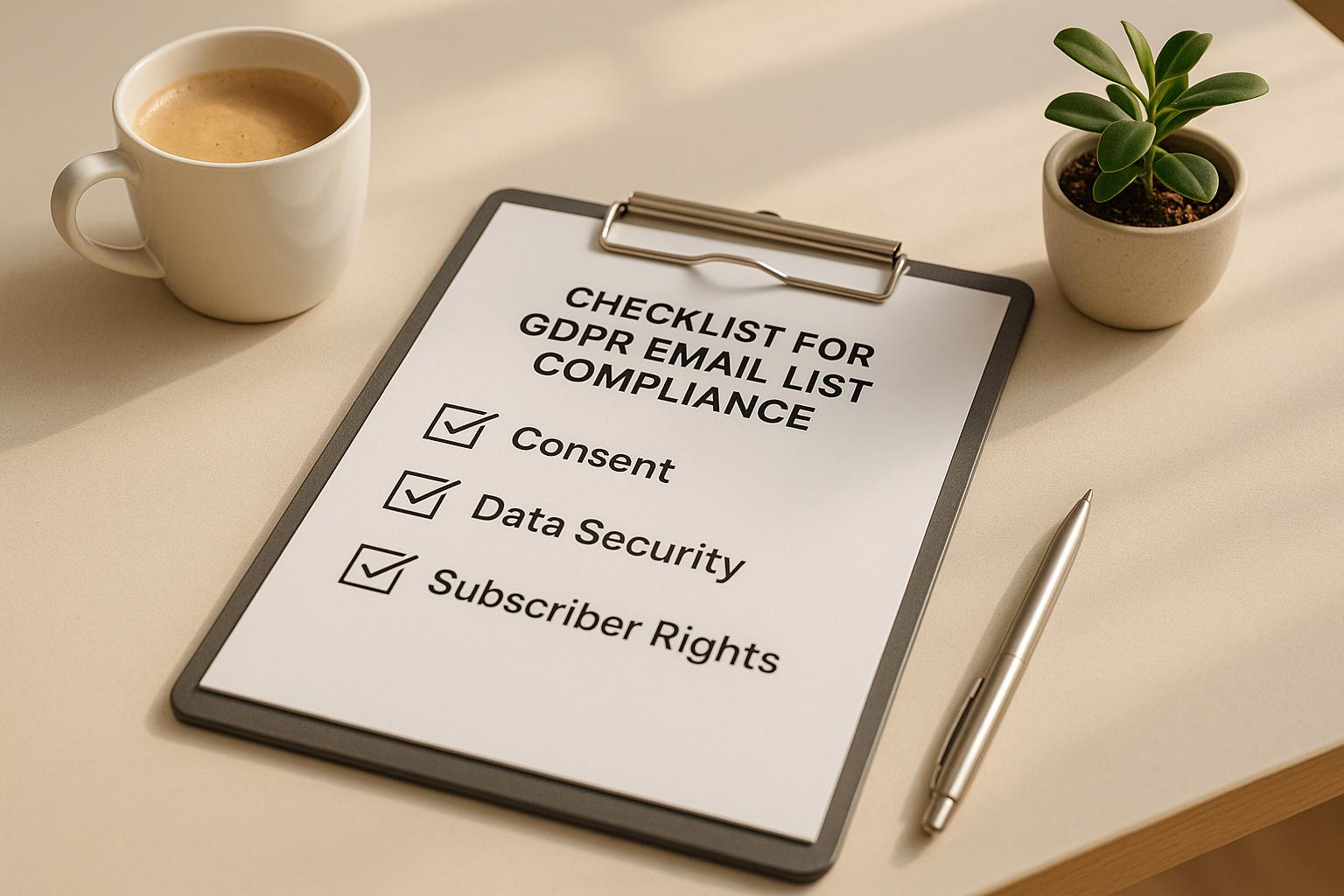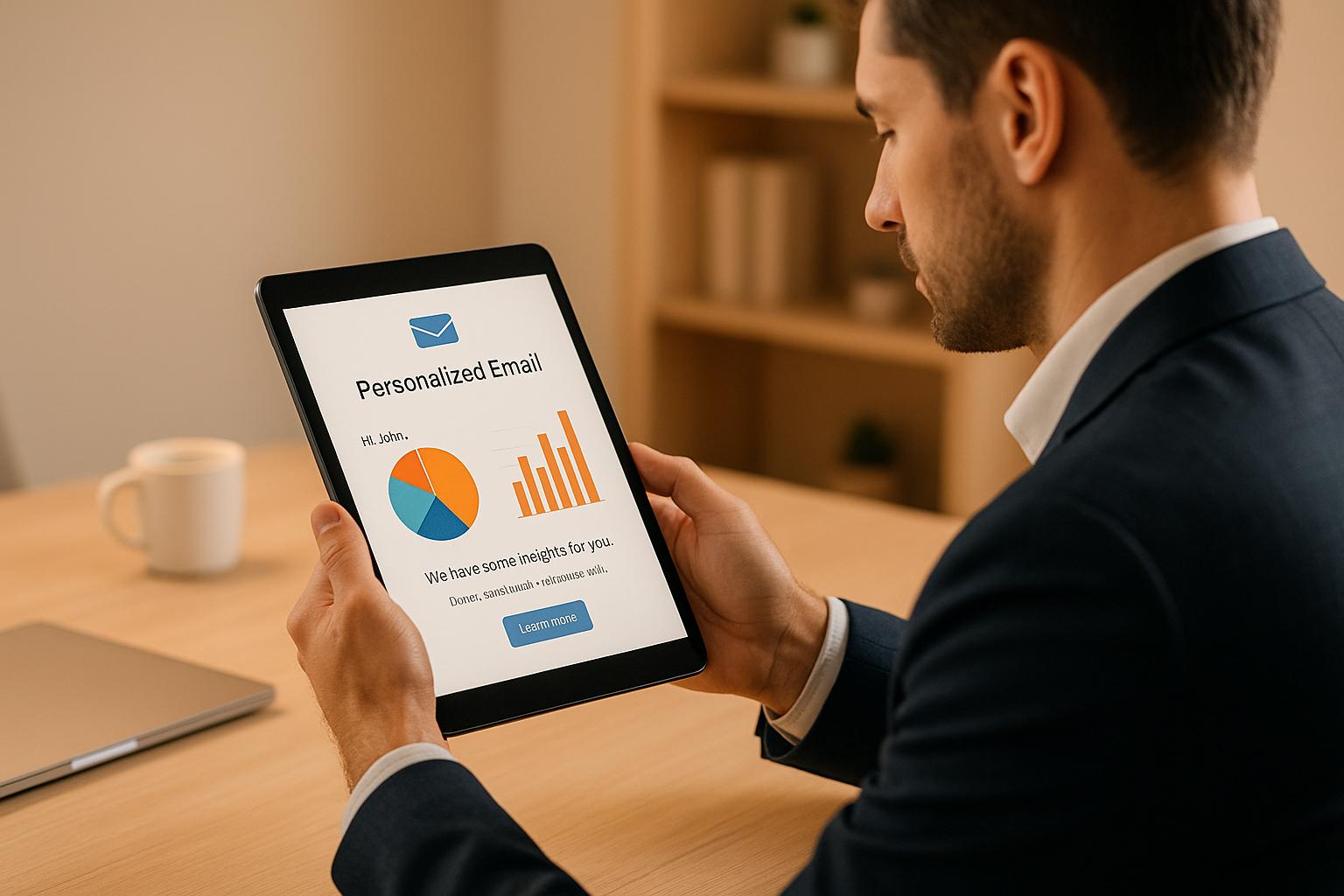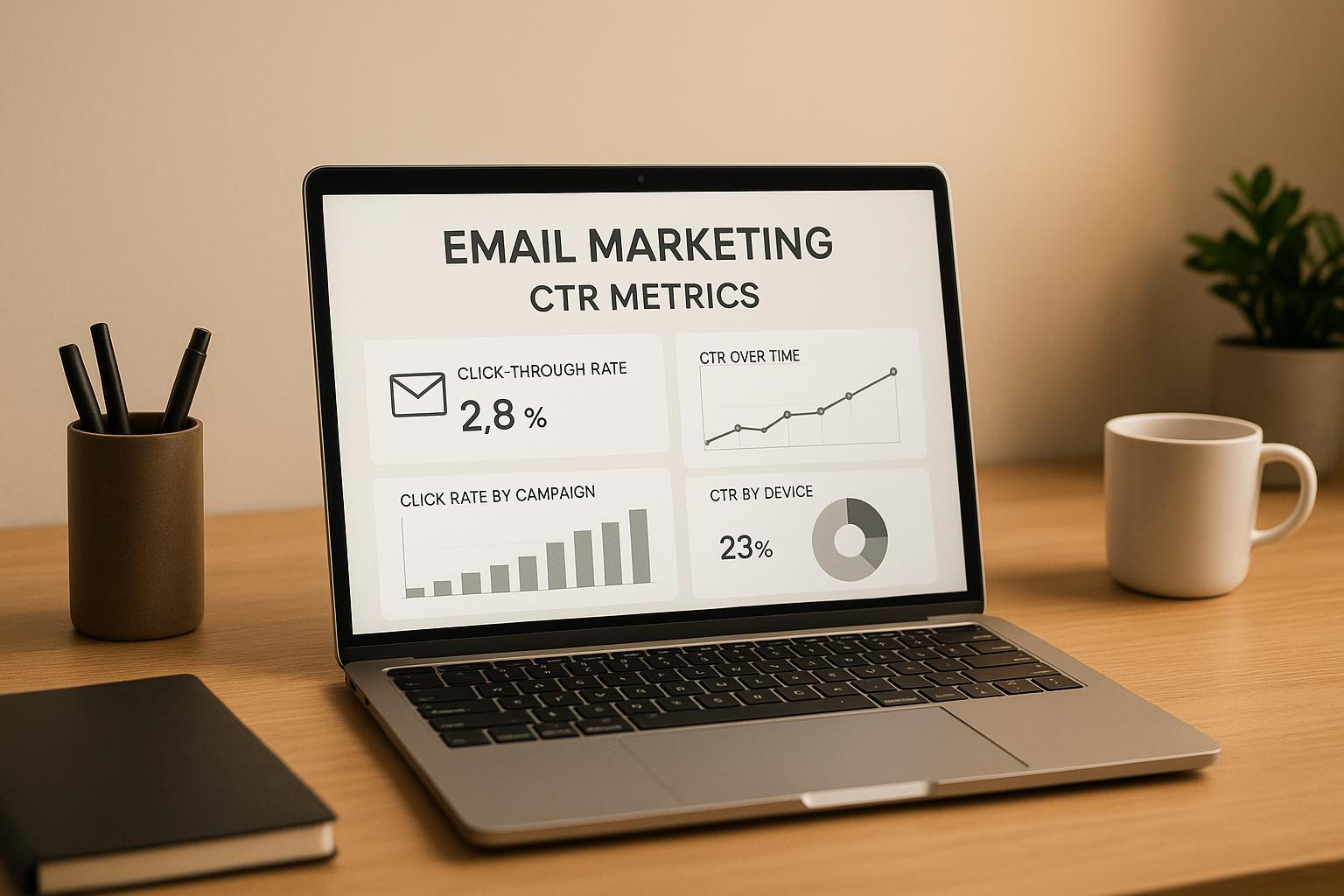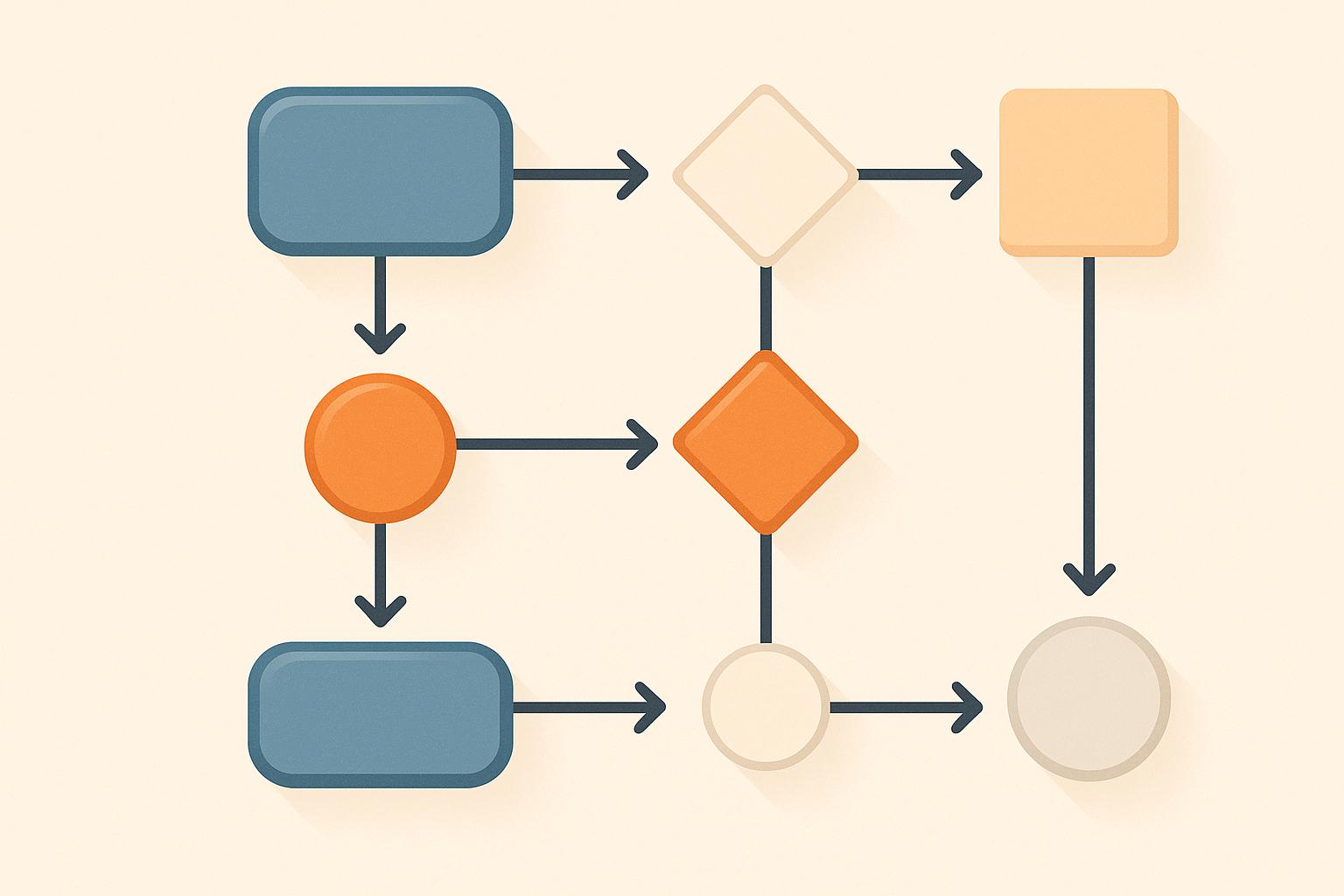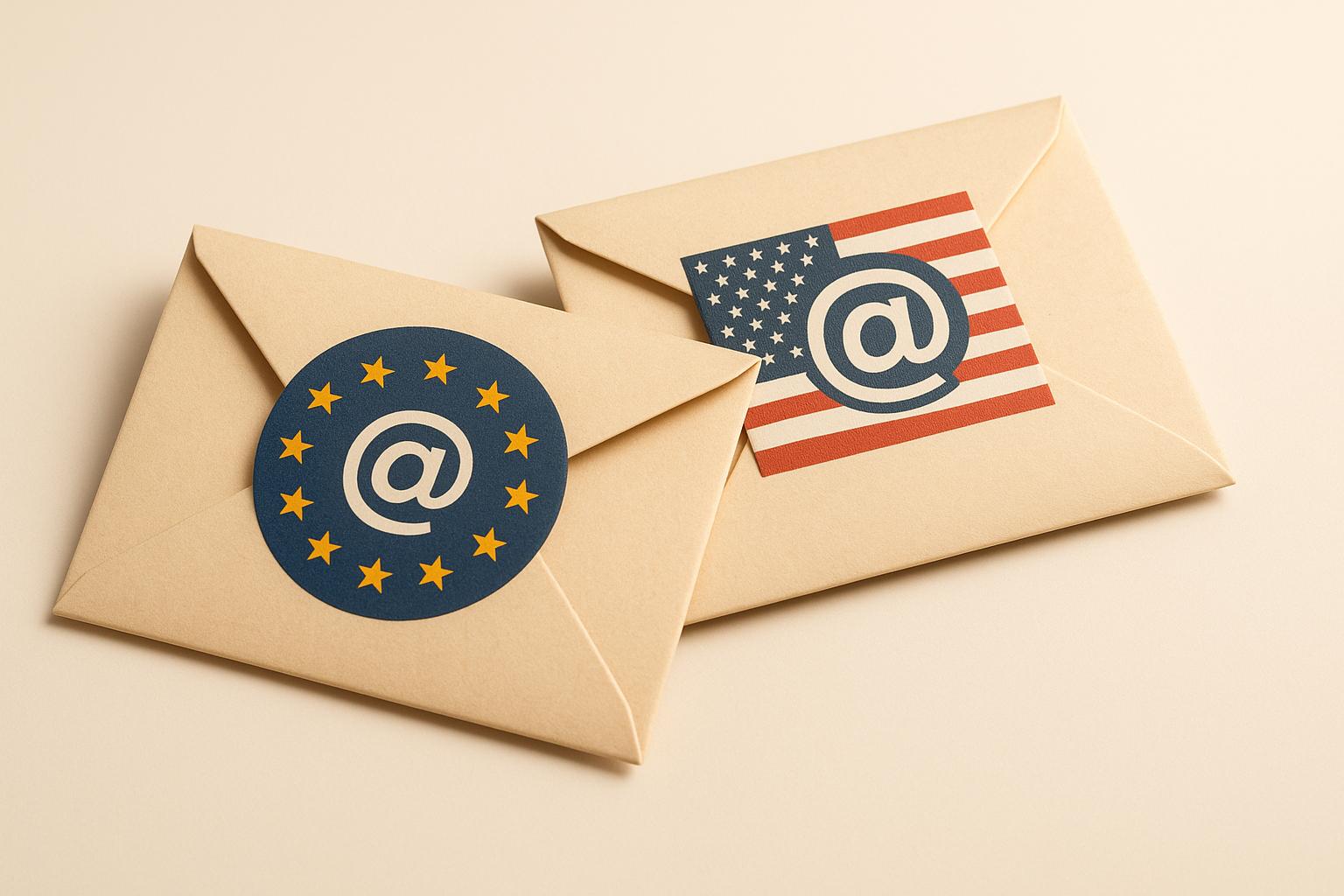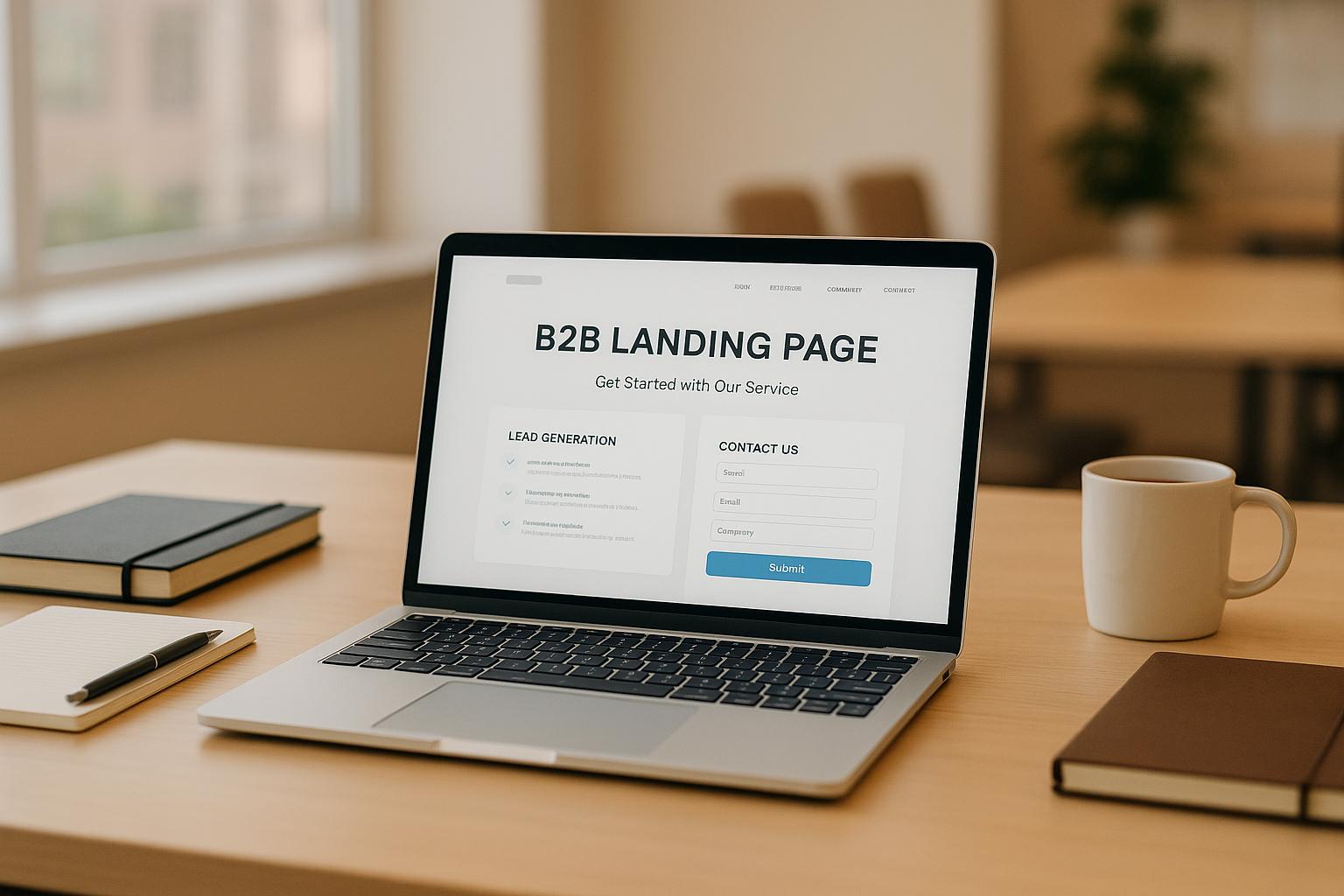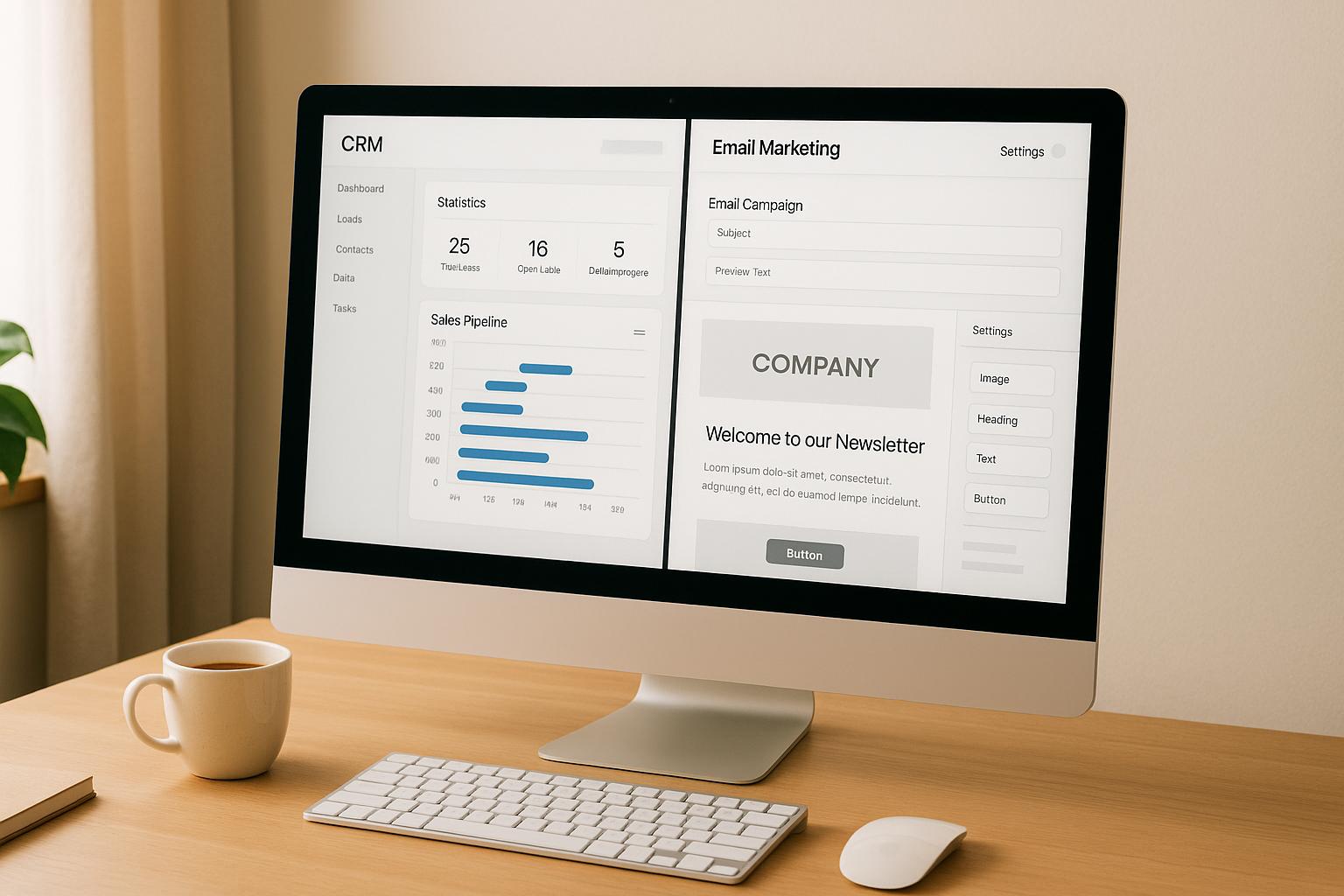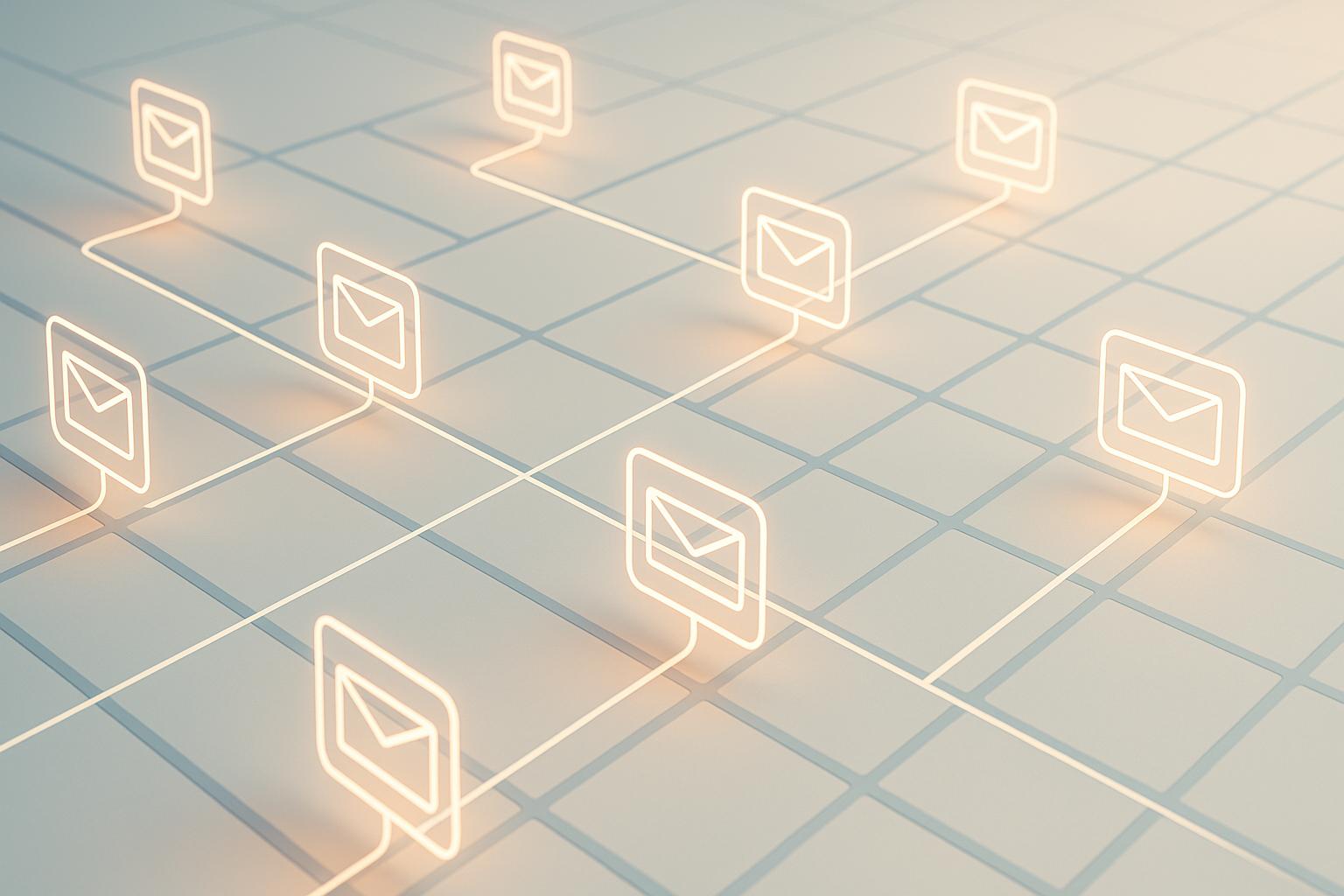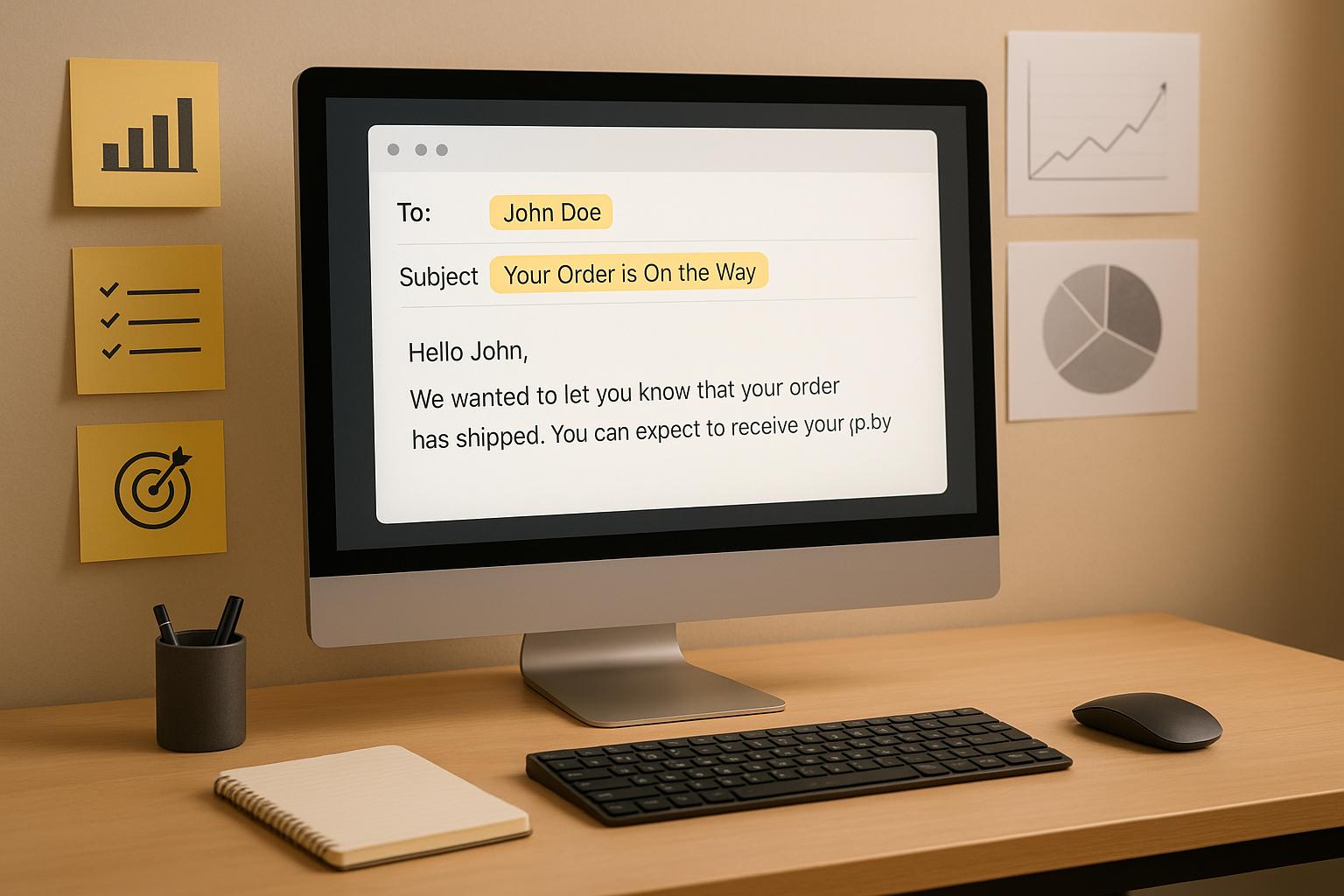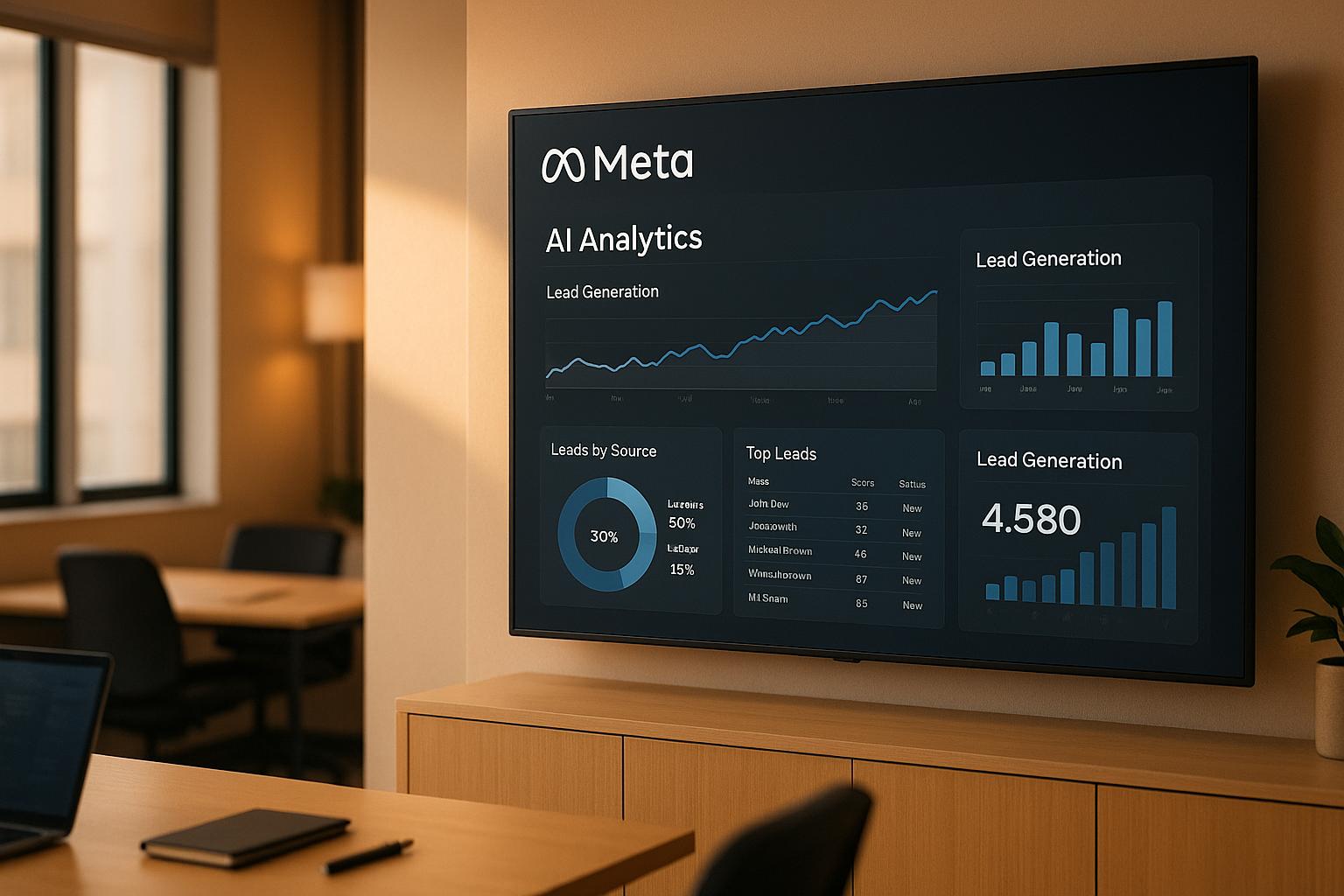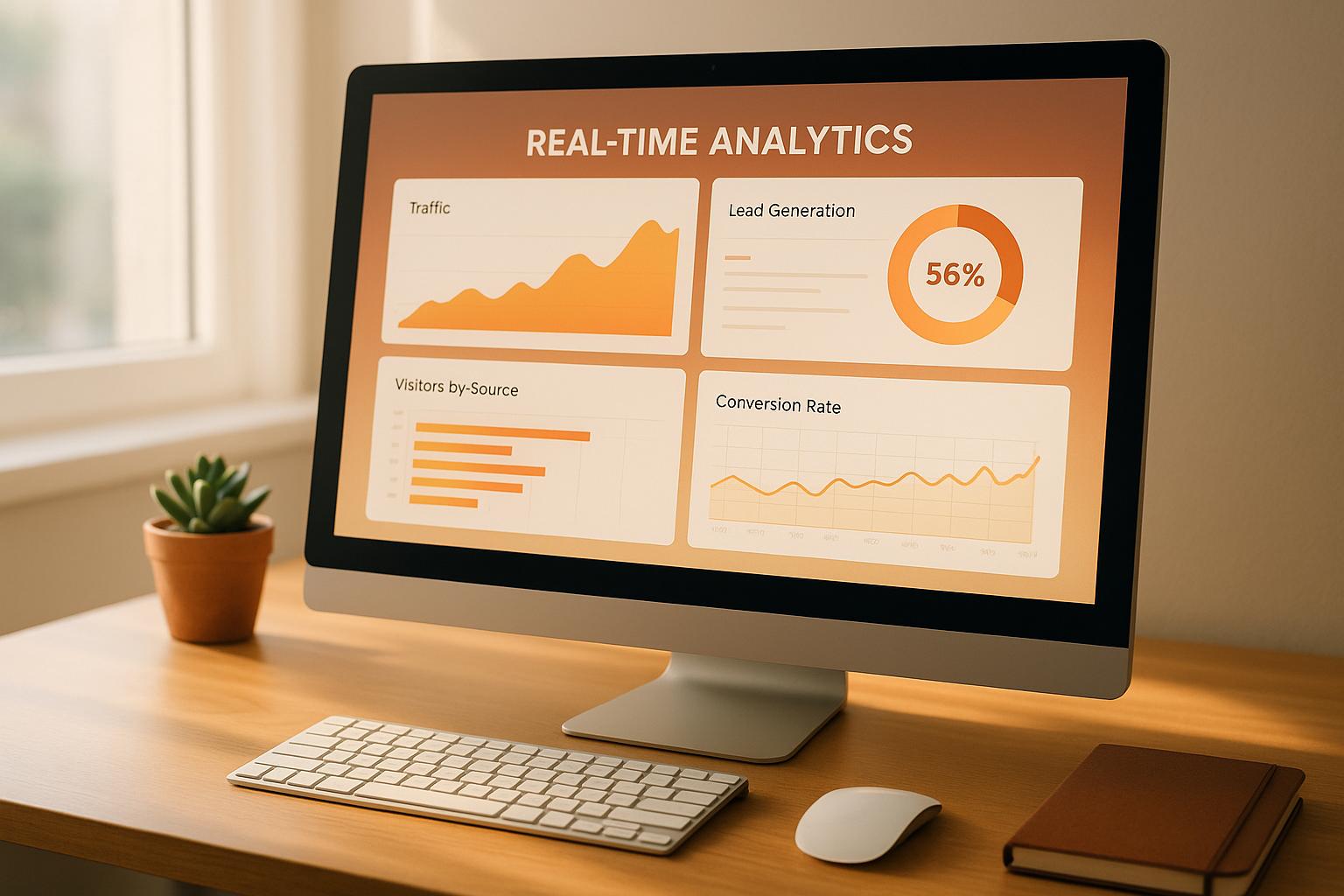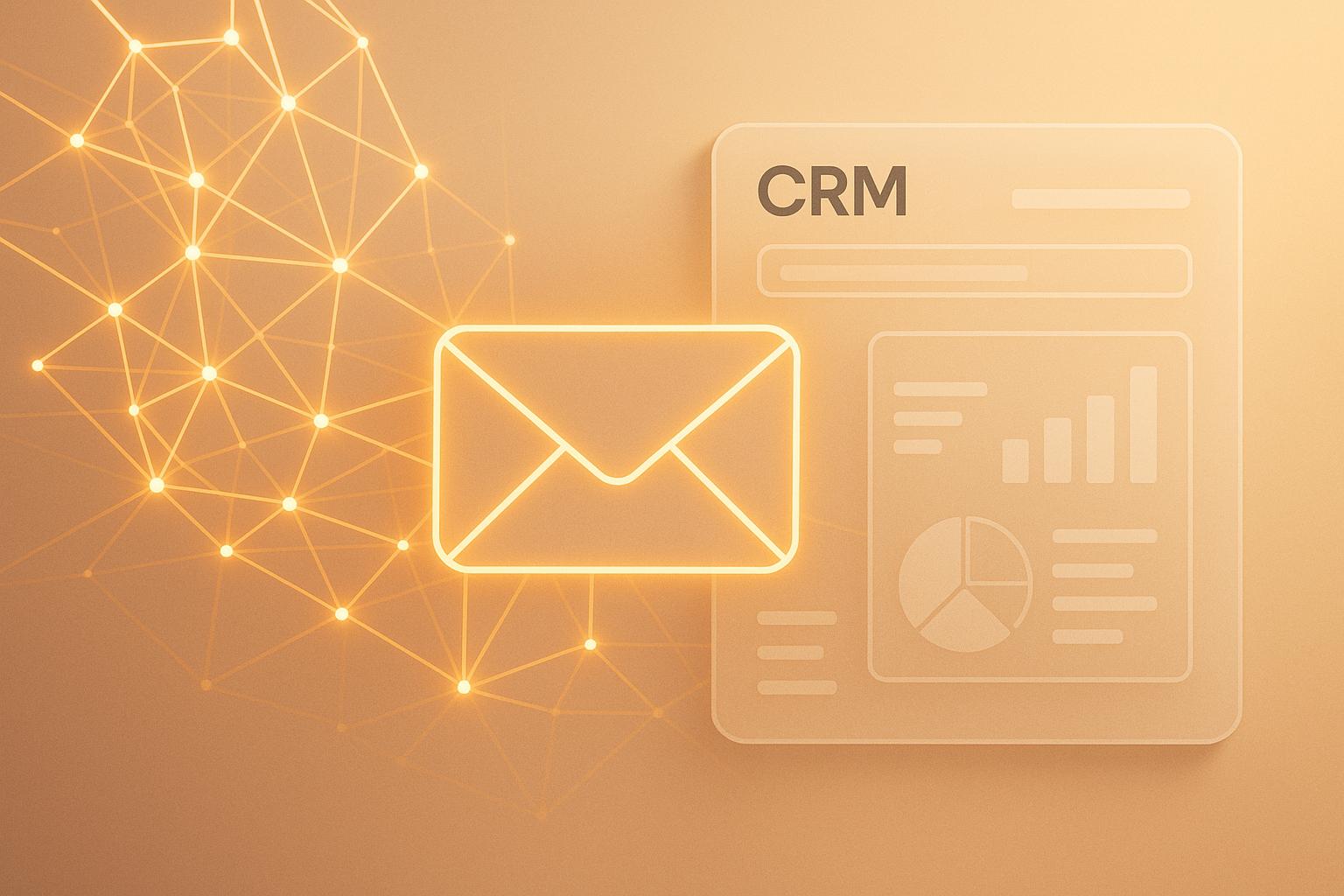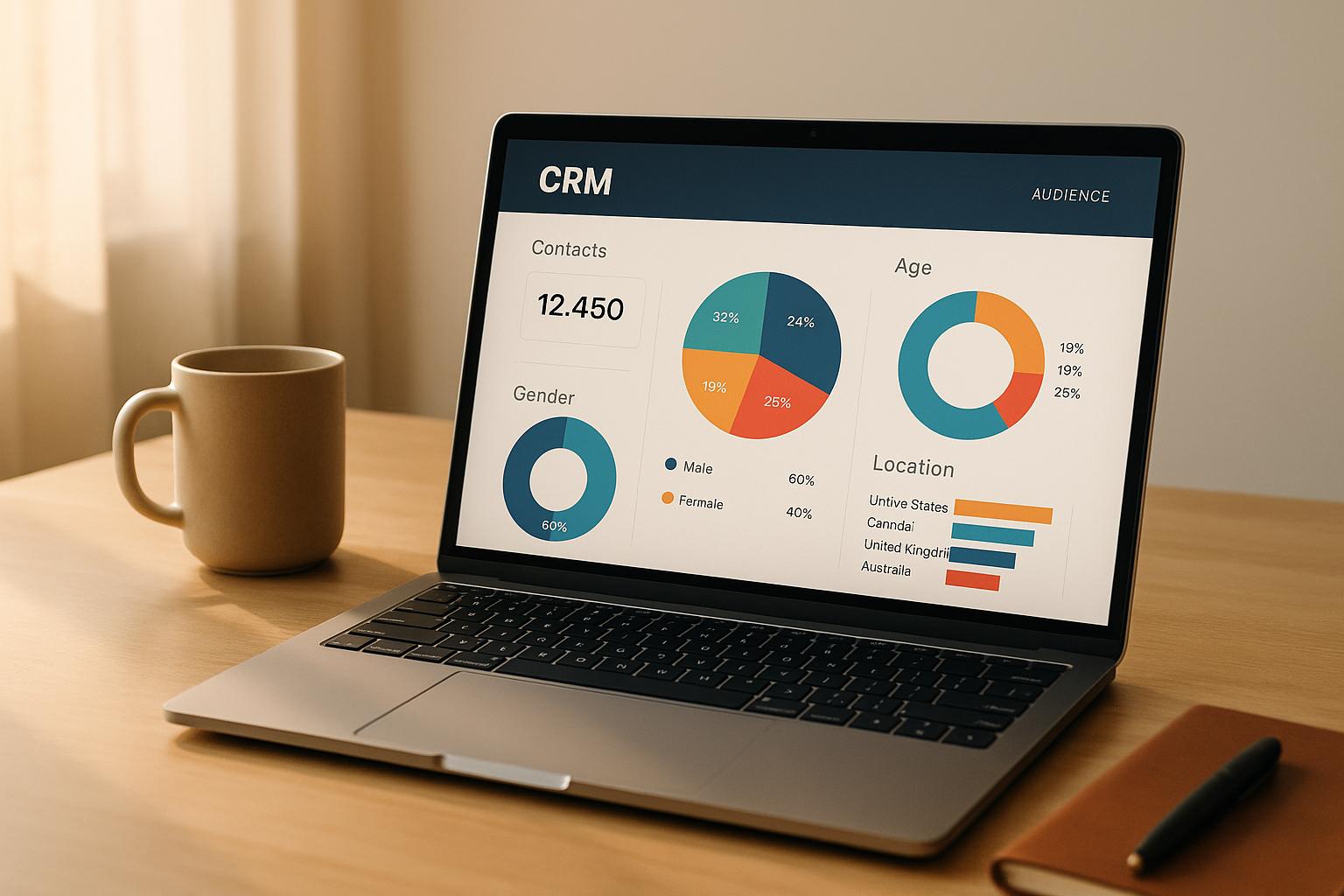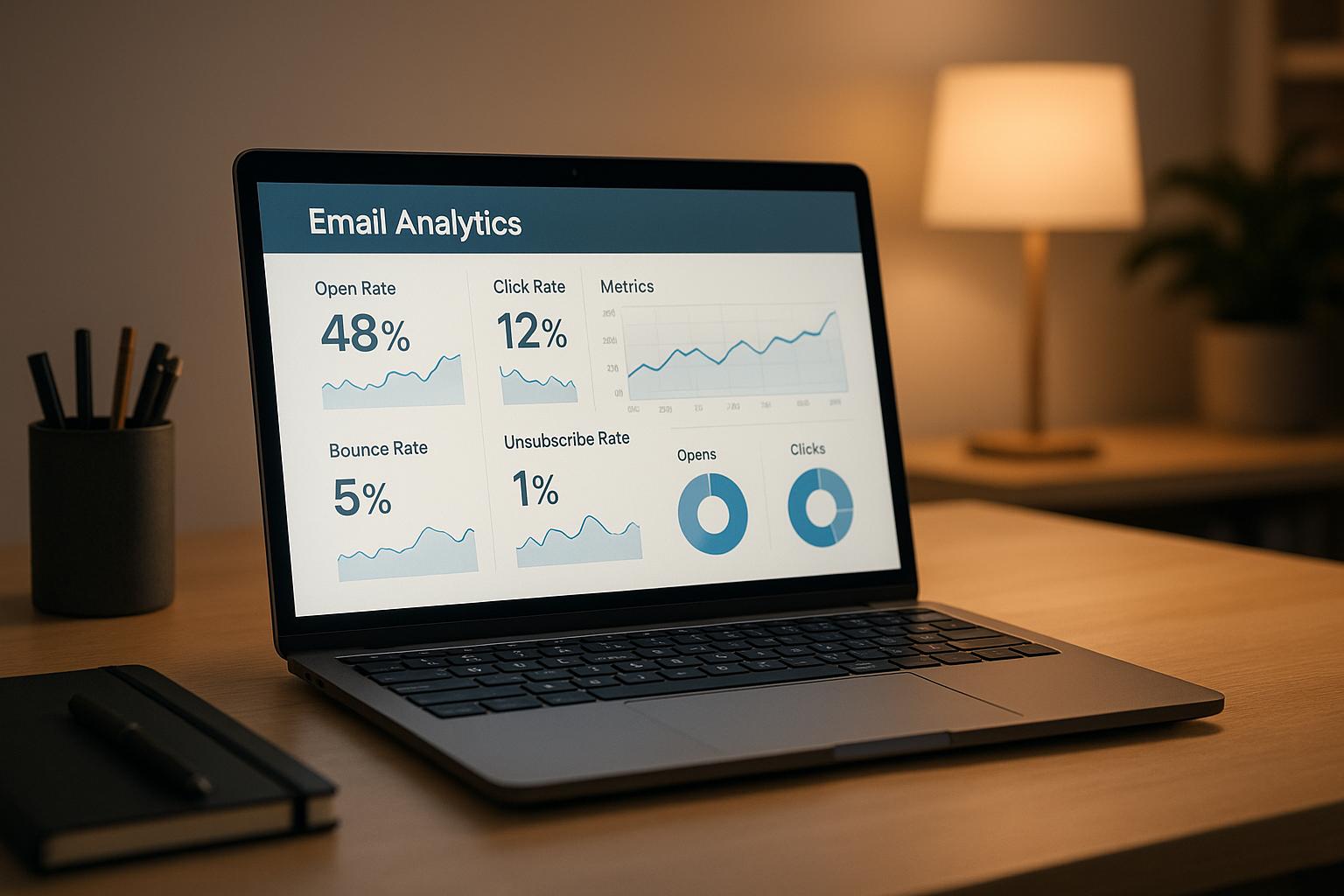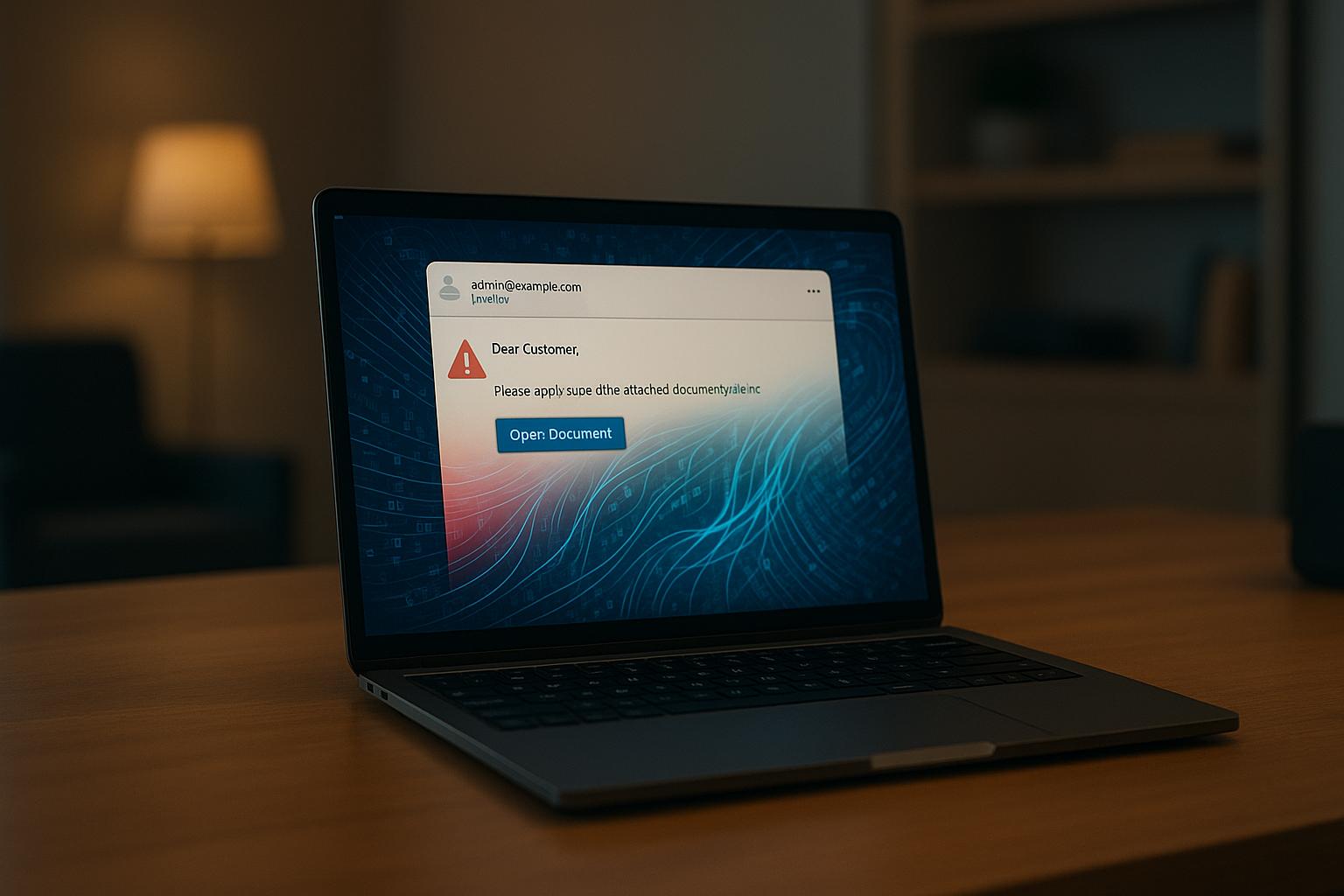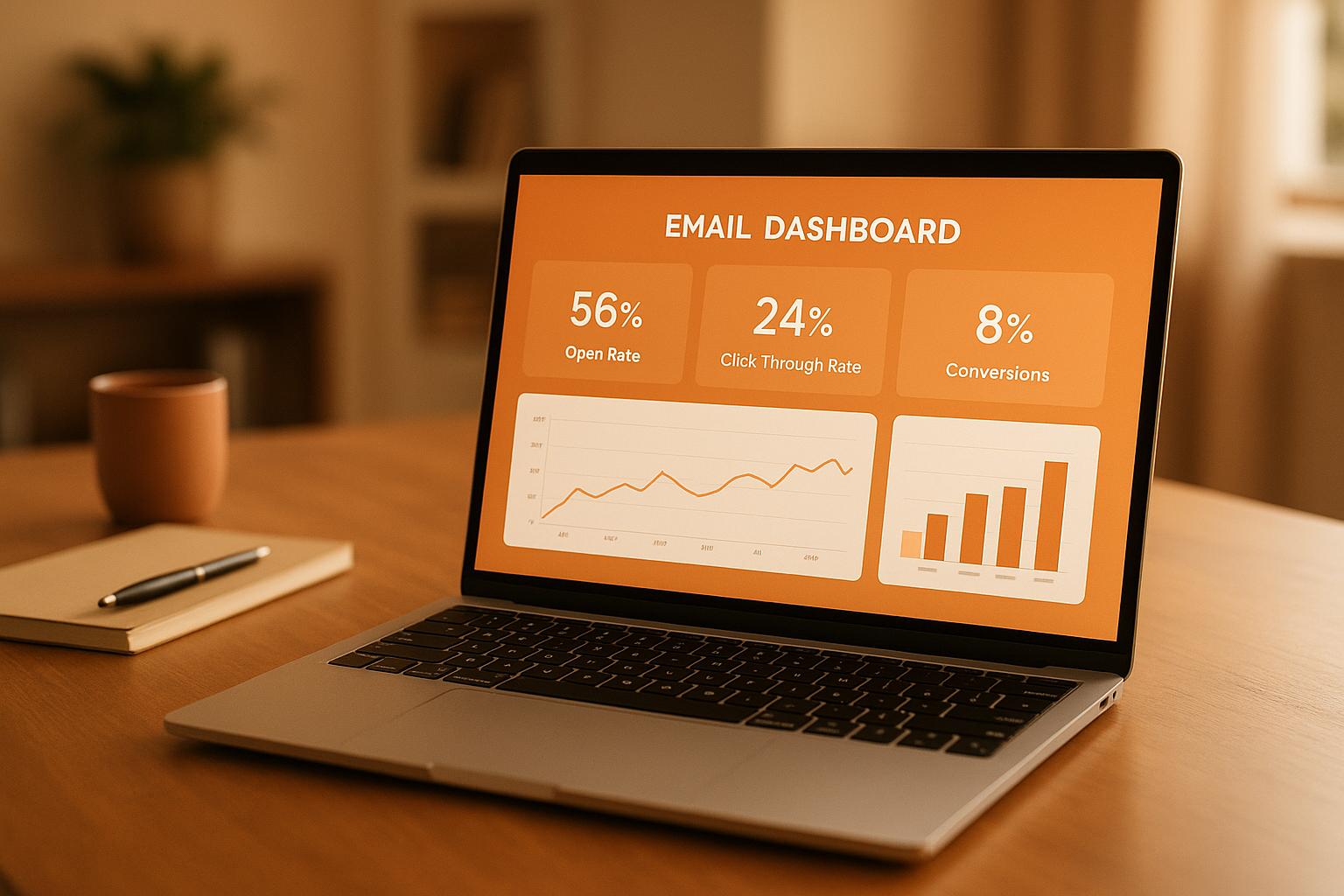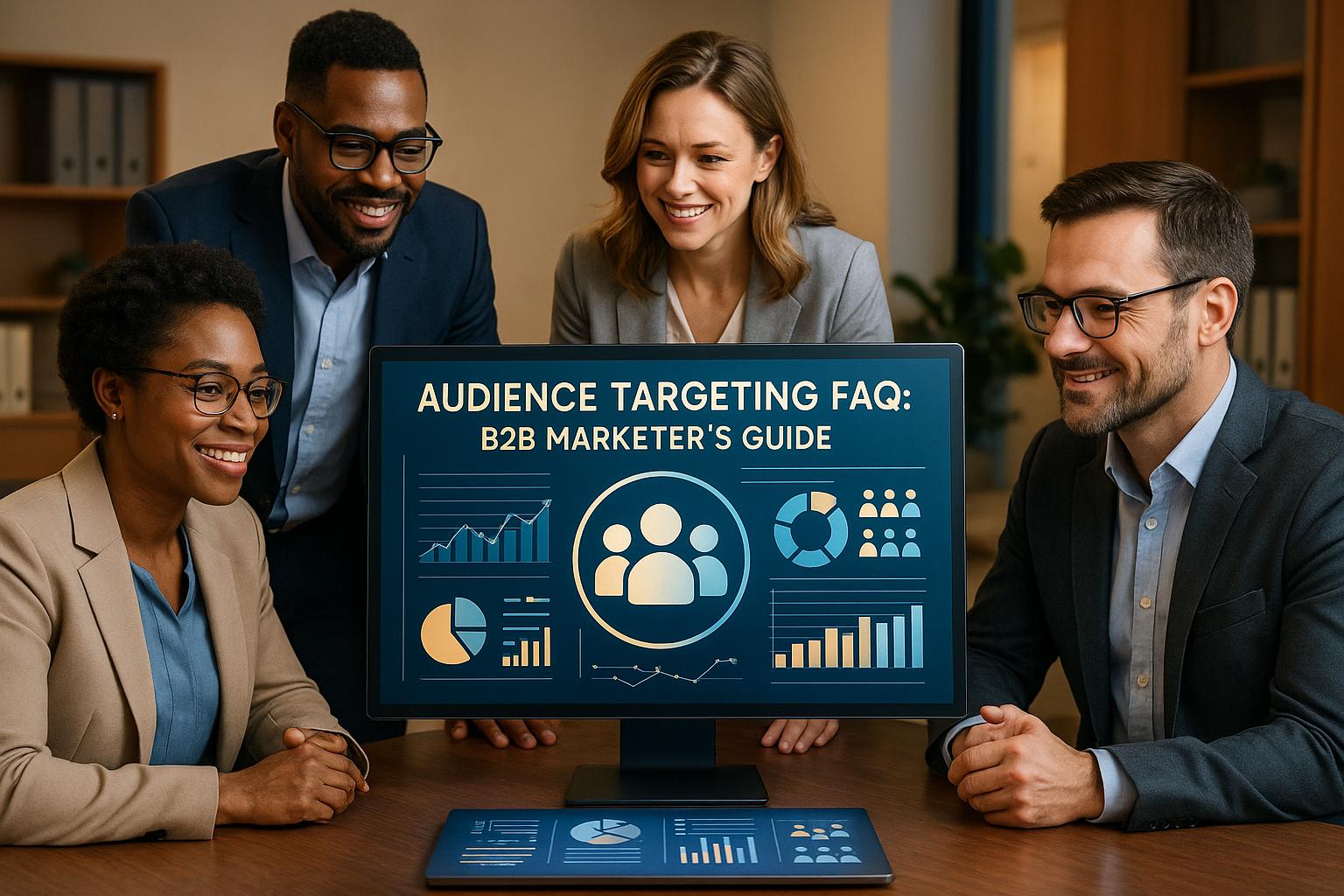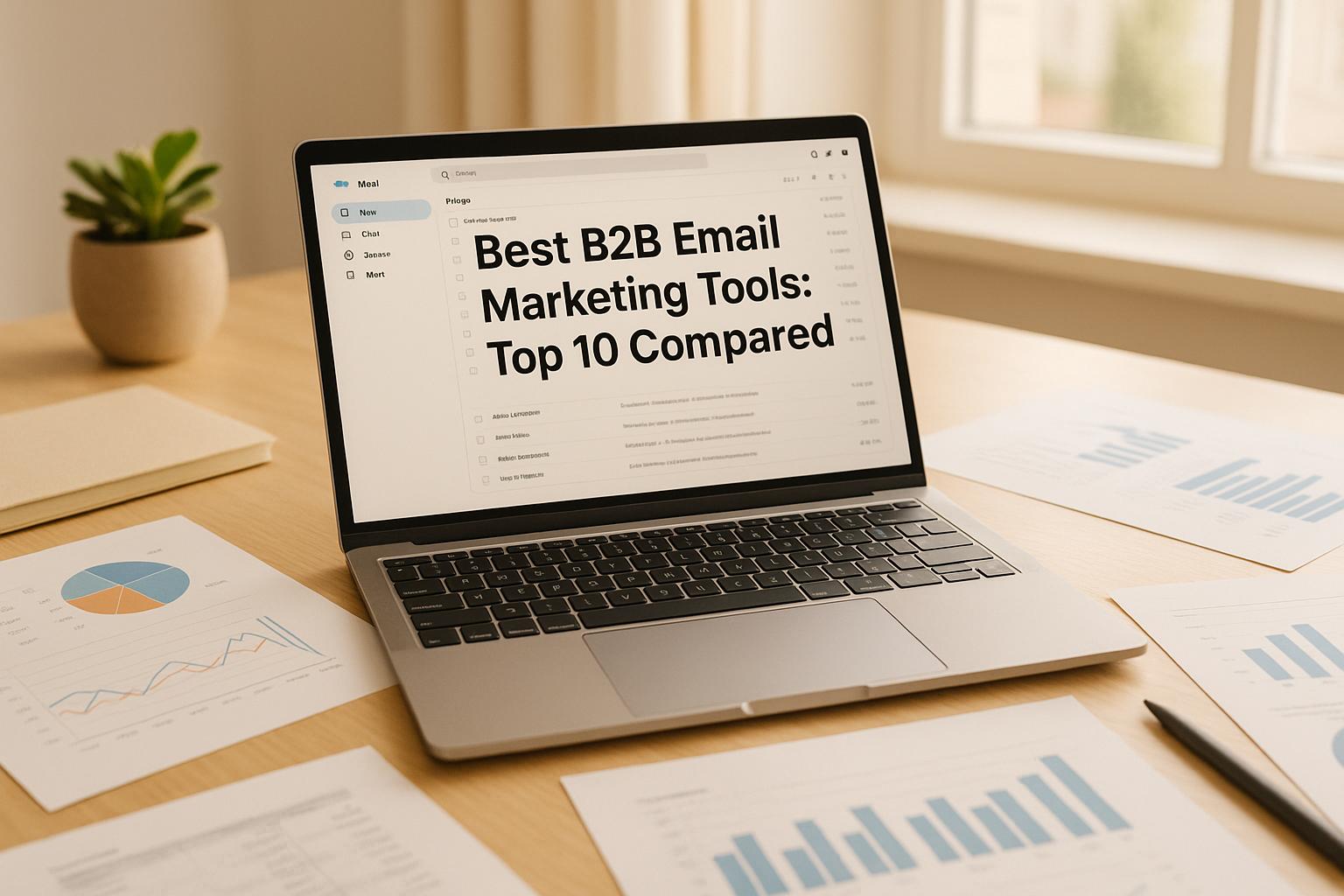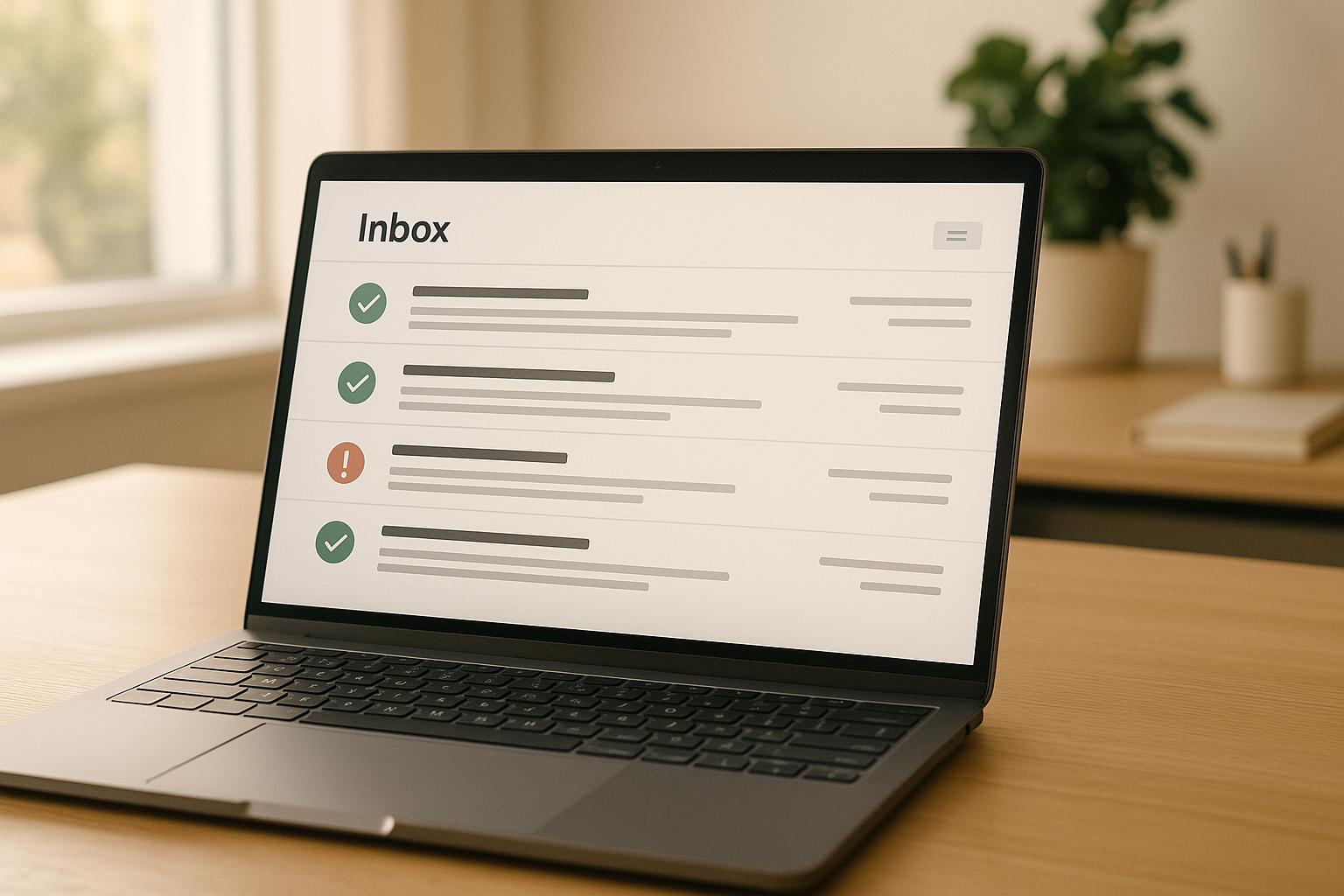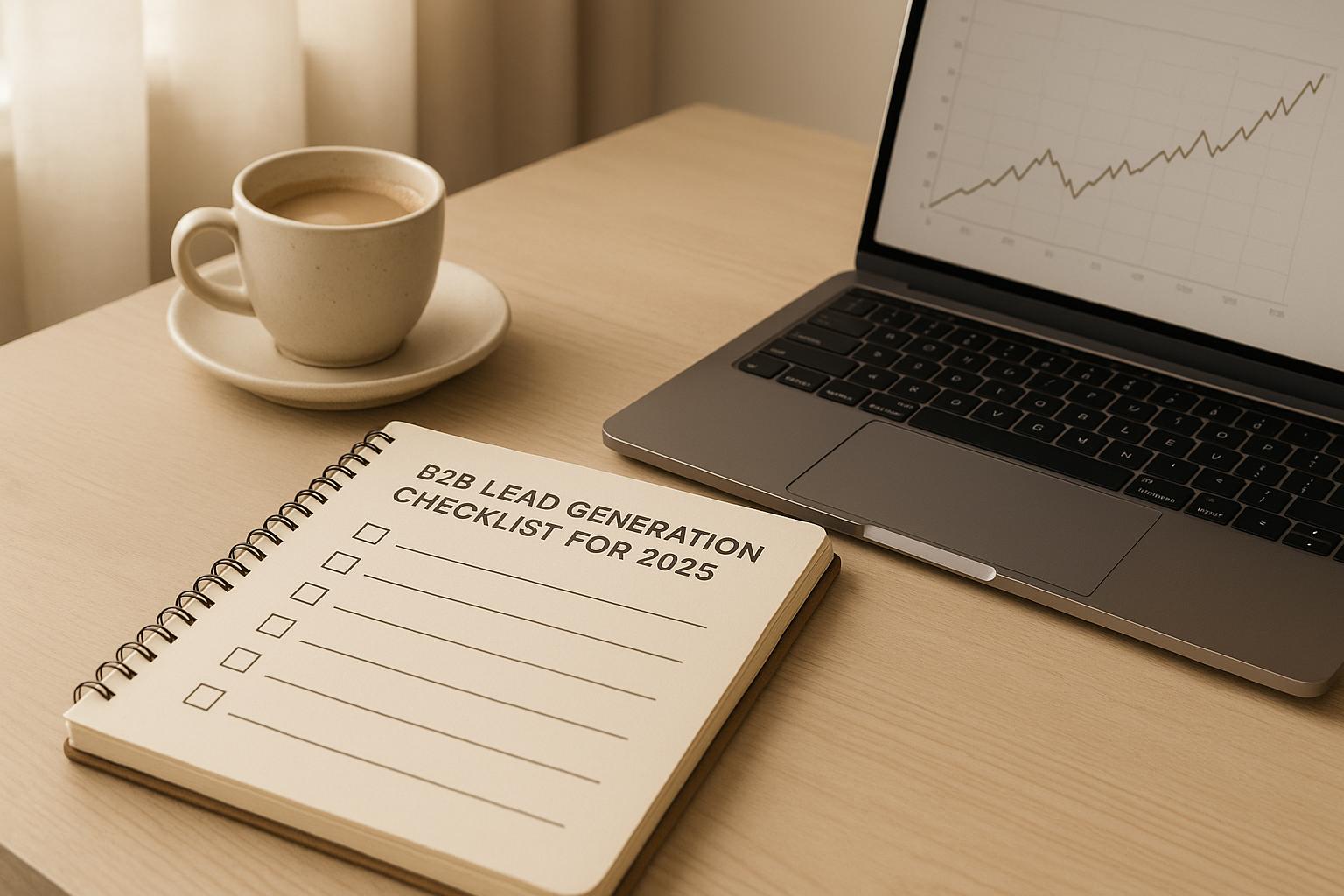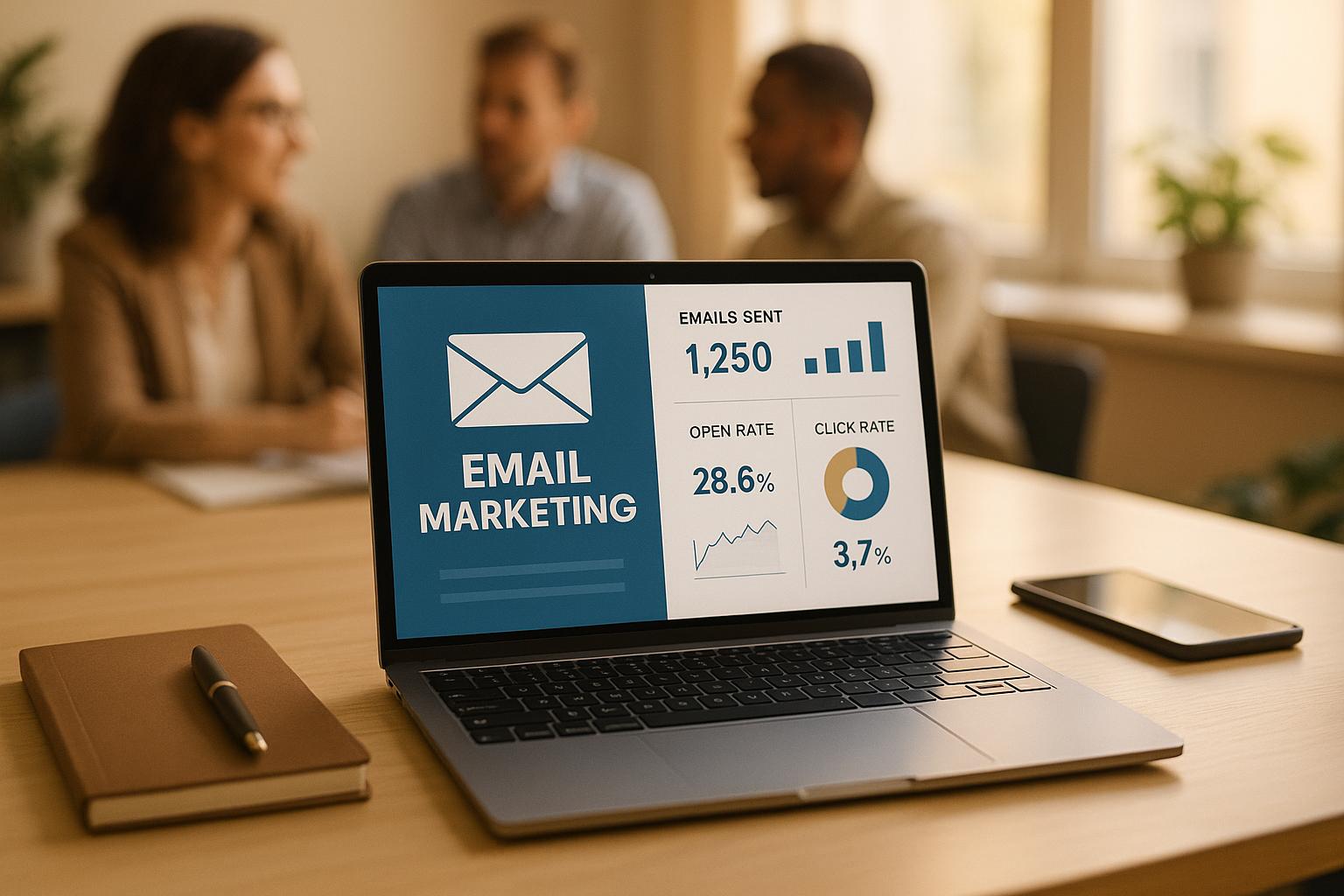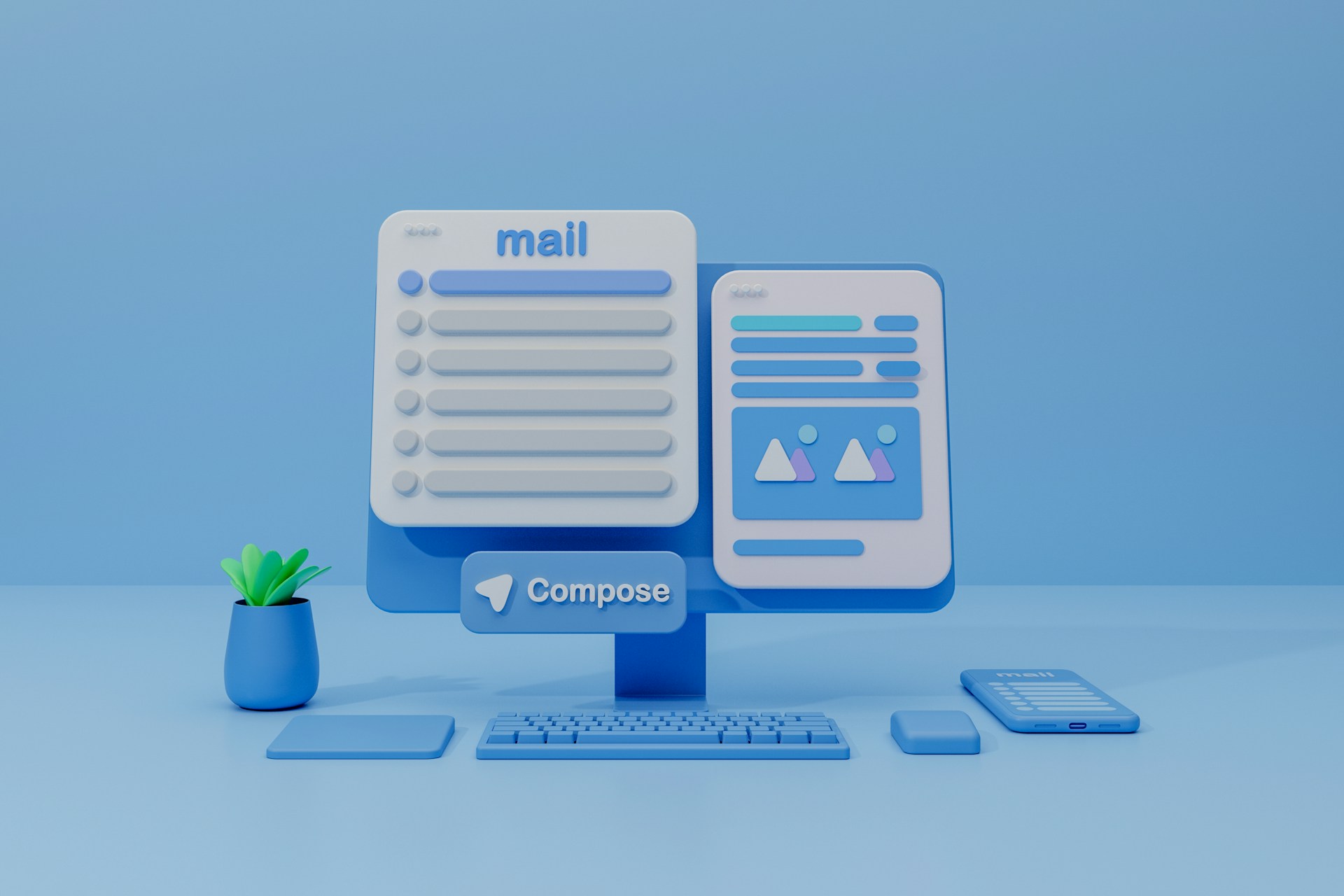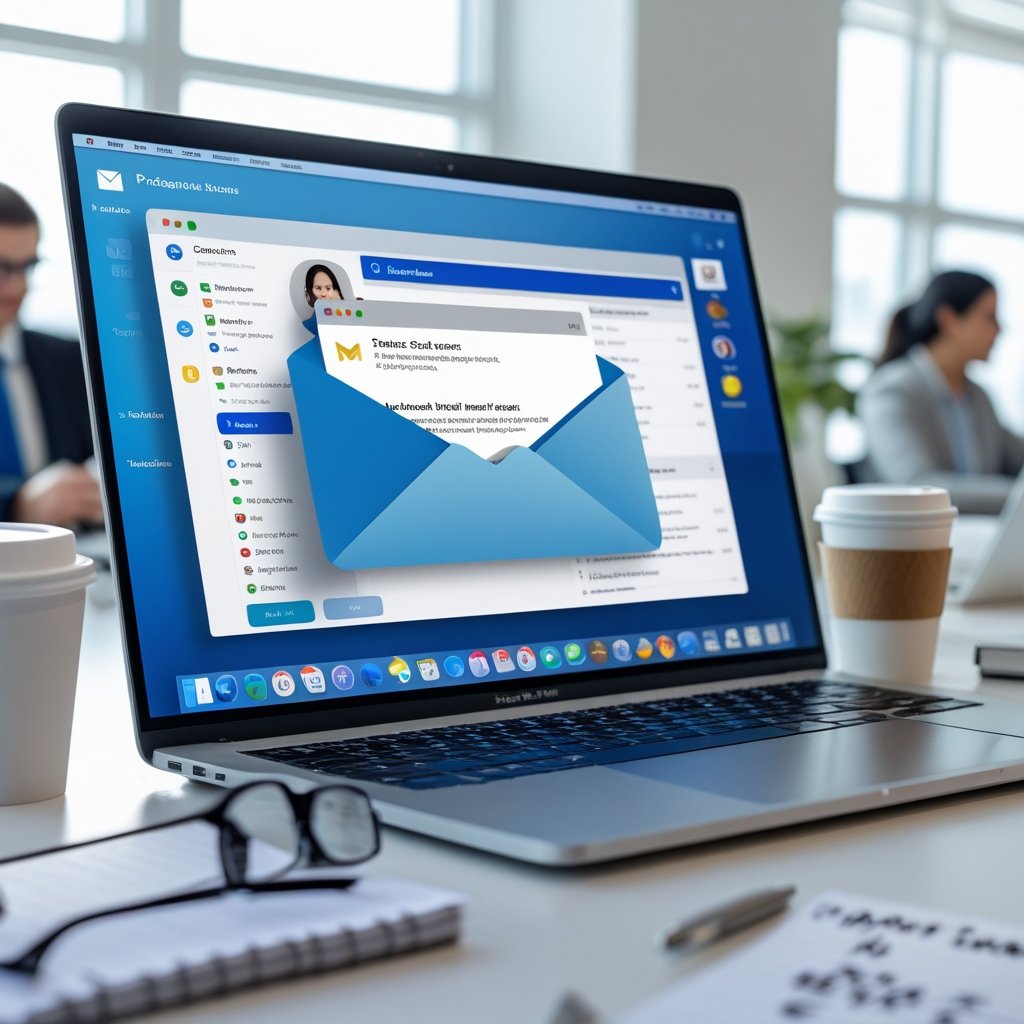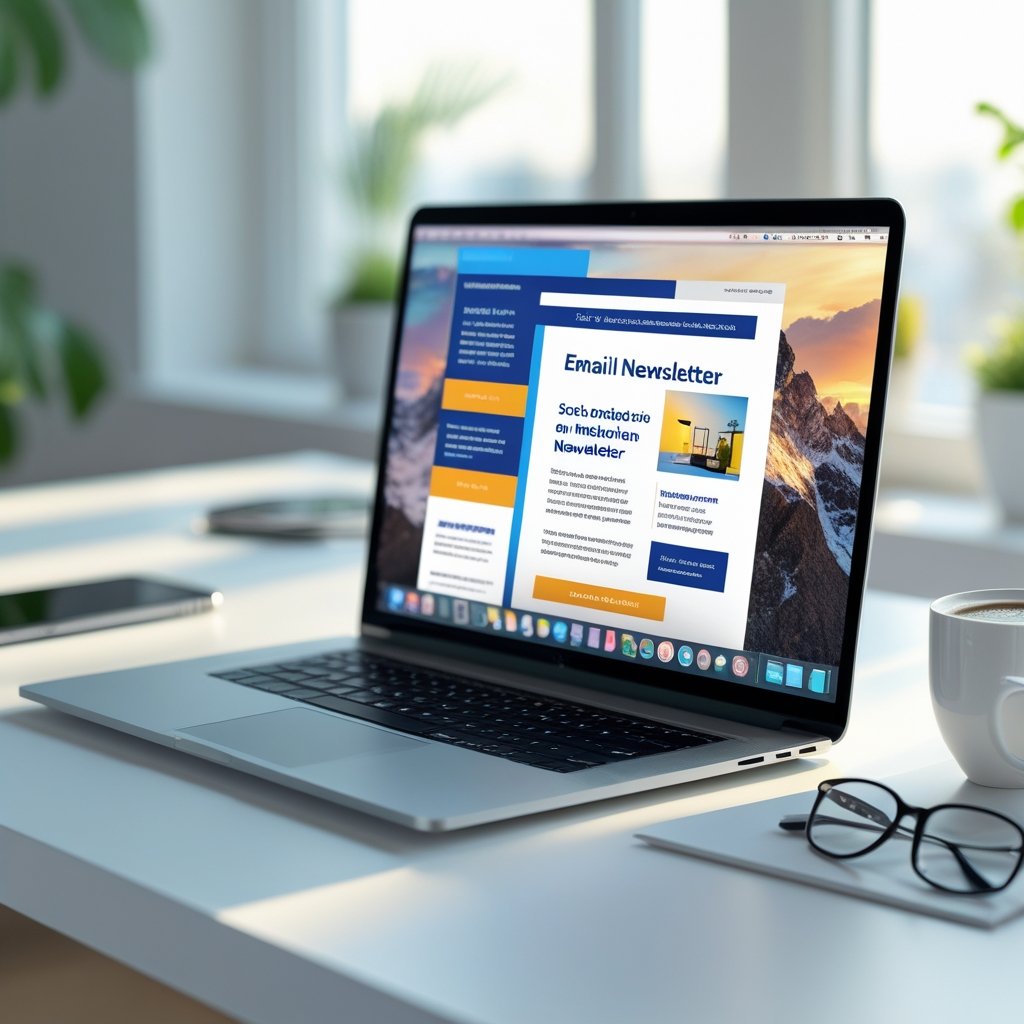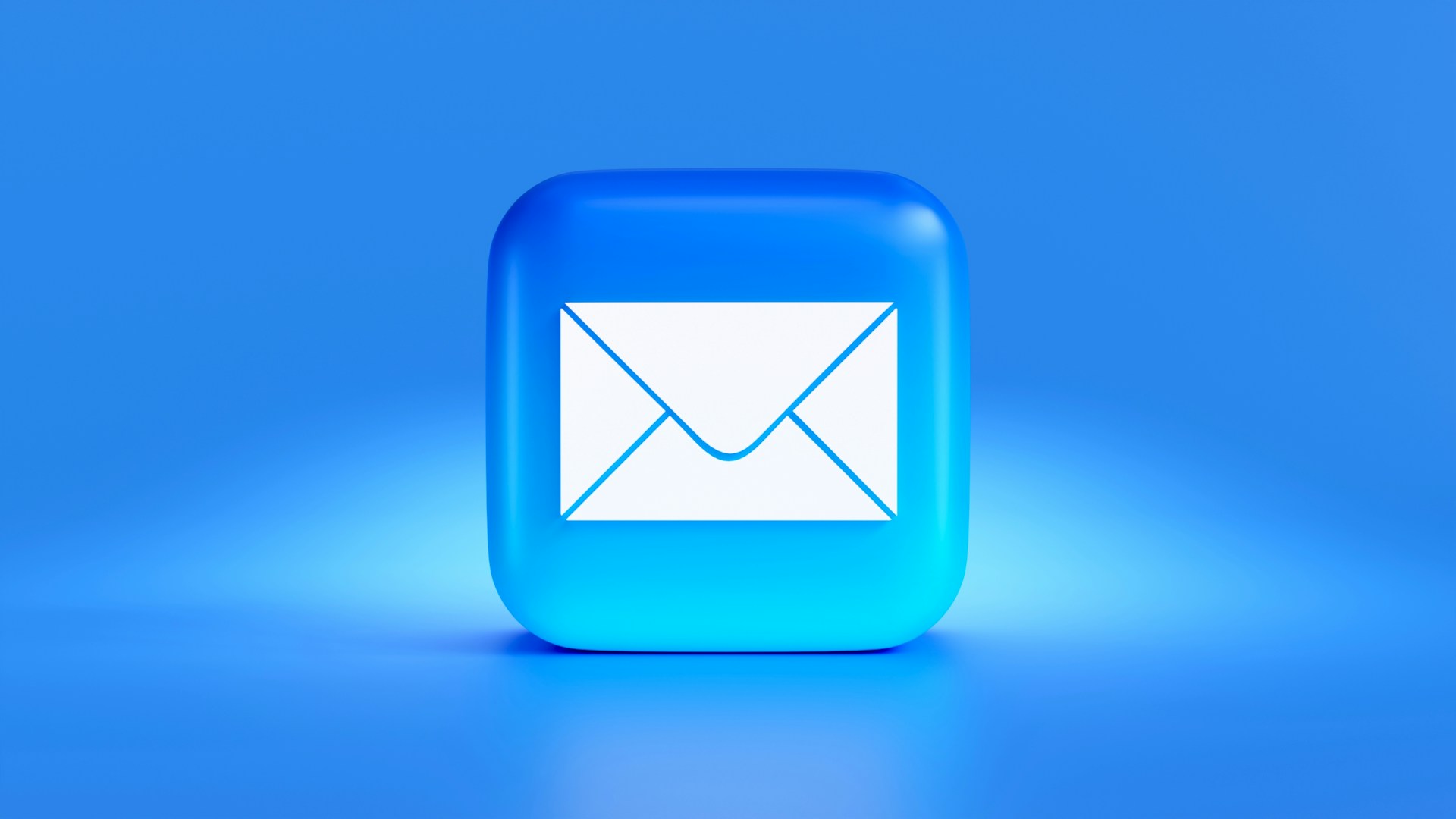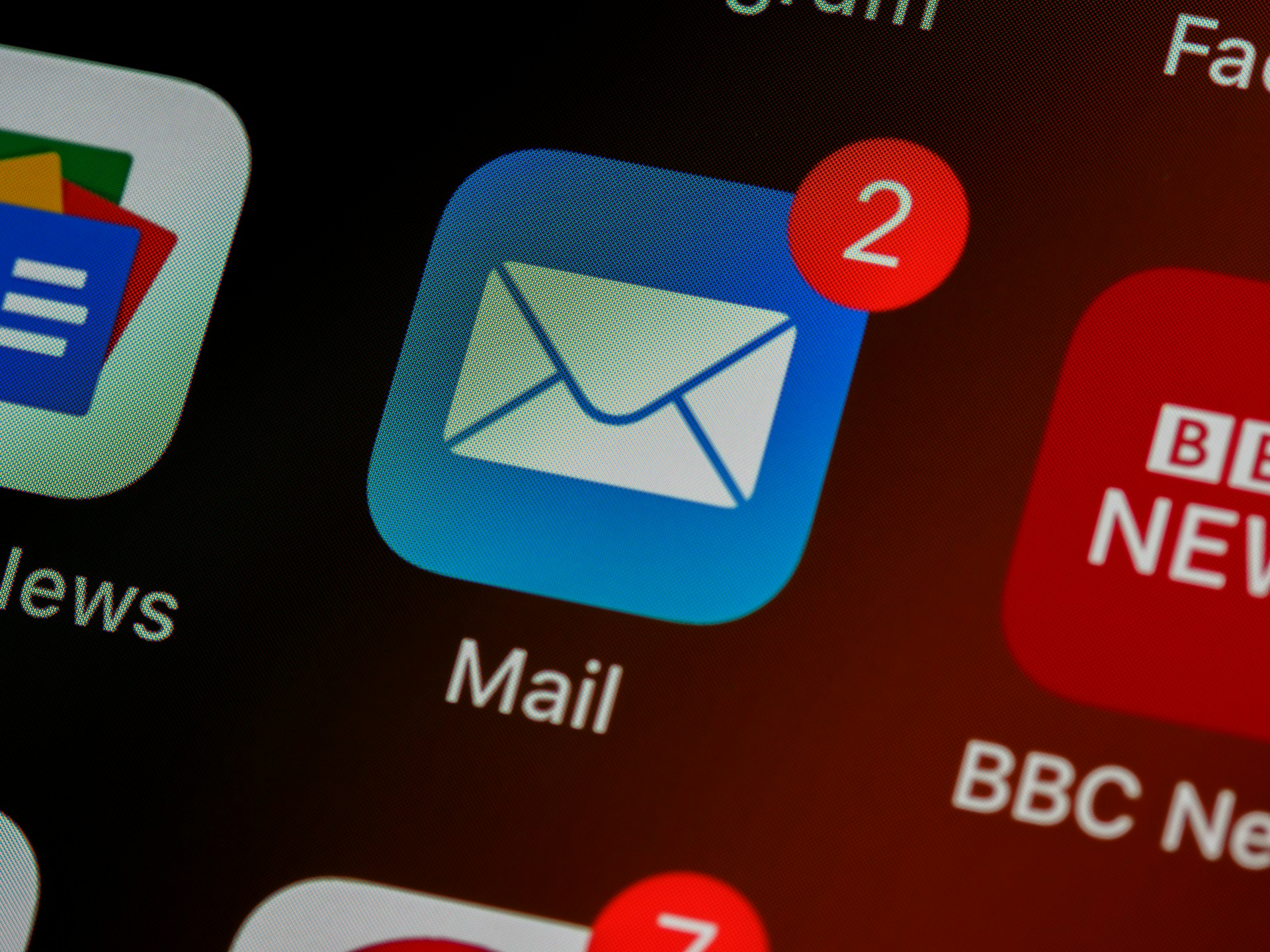Ultimate Guide to B2B Subject Line Strategy
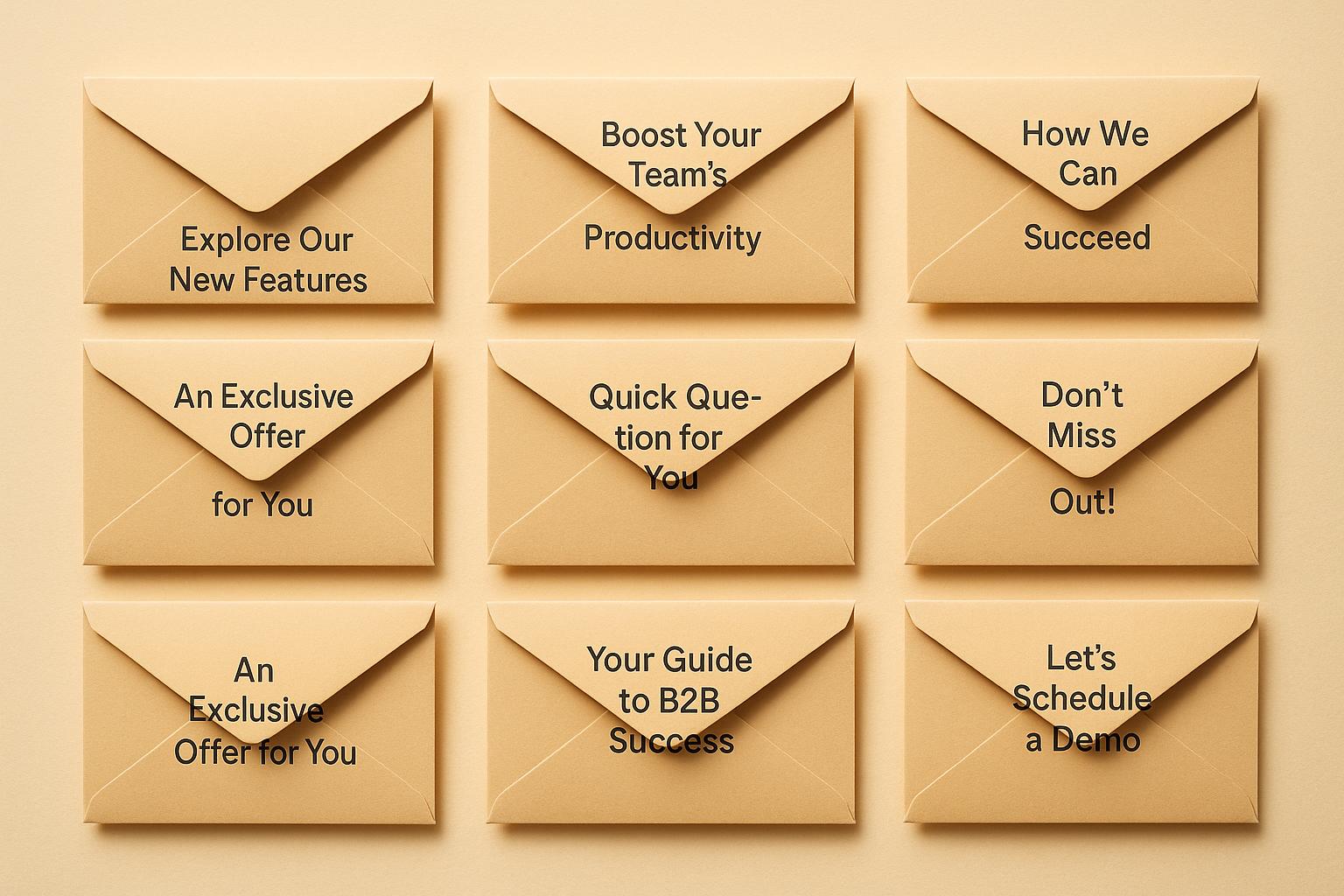
33% of people open emails based solely on the subject line. For B2B professionals, this means your subject line must deliver immediate value to stand out in crowded inboxes. Done right, subject lines can improve open rates by 26% and drive engagement through the sales funnel.
Here’s what you’ll learn:
- Why subject lines matter for B2B emails
- How B2B subject lines differ from B2C
- The psychology behind effective subject lines
- Techniques like personalization, curiosity, and social proof
- Tips for compliance, avoiding spam filters, and improving deliverability
Key takeaway: Short, clear, and relevant subject lines that address business challenges are the most effective. Use data, A/B testing, and automation to refine your strategy and improve results over time.
B2B Subject Lines Review: Best to Worst
What Makes B2B Subject Lines Work
Crafting effective B2B subject lines requires a deep understanding of business dynamics. Unlike casual consumer interactions, B2B emails operate in a world where stakes are higher, decisions take longer, and expectations are more demanding. A well-thought-out subject line can make all the difference in grabbing attention and driving action.
How B2B Subject Lines Differ from B2C
B2B subject lines serve a completely different purpose compared to B2C ones. While B2C emails often rely on emotional hooks, humor, or impulse-driven messaging, B2B emails must deliver clear value that addresses specific professional challenges.
The tone is another major distinction. B2C subject lines might say something like, "Don't Miss Our Weekend Sale!" to create a sense of urgency and excitement around personal purchases. On the other hand, B2B subject lines prioritize professionalism and efficiency. For example, "Boost Your Team's Productivity by 20%" is direct, actionable, and relevant to workplace goals.
The content focus also sets them apart. B2C emails often highlight discounts, lifestyle perks, or entertainment. In contrast, B2B subject lines emphasize ROI, efficiency, and solutions. They might reference industry trends, competitive advantages, or measurable outcomes instead of emotional appeals.
Even personalization takes a different approach. While B2C emails might use data like browsing history or recent purchases, B2B personalization digs deeper. It reflects an understanding of the recipient's company, role, and challenges. Instead of "Hey Sarah, check out these shoes you viewed", a B2B subject line might say, "Sarah, streamline your data integration at TechCorp."
Next, let’s explore the psychological factors that influence whether a business professional opens an email.
Psychology Behind B2B Email Opens
B2B subject lines leverage specific psychological triggers to engage decision-makers. One of the most effective triggers is problem-solving relevance. If a subject line addresses a significant challenge or pain point, it’s far more likely to get opened. For instance, "Solve Your Supply Chain Delays in 30 Days" directly speaks to a pressing issue.
Authority and credibility are also essential. Subject lines referencing respected organizations, data-driven insights, or proven methods build trust. For example, "McKinsey's Latest Report: Cost-Cutting Strategies" uses institutional credibility to catch attention.
Urgency in B2B emails works differently than in consumer marketing. Tactics like false deadlines can backfire, leading to unsubscribes or a damaged reputation. Instead, urgency should tie to real business needs, such as deadlines or competitive pressures. A subject line like "Q4 Budget Deadline Approaching – Act Now" conveys urgency without feeling manipulative.
Curiosity, when handled carefully, can also drive opens. While vague phrases like "Big News Inside!" might work for B2C, business professionals need enough detail to justify their time. A subject line such as "How Microsoft Cut IT Costs by 40%" sparks curiosity while offering clear, actionable insights.
Finally, exclusivity appeals to the competitive nature of many business leaders. Subject lines like "Exclusive Data for Fortune 500 CTOs" tap into the desire for insider knowledge and competitive advantage.
Length, Clarity, and Relevance Guidelines
Beyond psychology, the format of your subject line matters just as much. Keep it short and to the point - ideally 2–4 words or 30–50 characters - to ensure it’s fully visible on mobile devices.
Clarity wins over cleverness in the B2B world. Business professionals value transparency and efficiency. For example, "Your Q3 Marketing Report Is Ready" is far more effective than something vague like "Big News Inside!" because it immediately conveys value.
Mobile optimization is critical, as many executives check emails on their smartphones throughout the day. Subject lines that get cut off lose their impact, so always test how your message displays across devices.
Relevance is key and goes beyond simply inserting the recipient’s name. Effective subject lines reference specific industries, company details, or business challenges. For instance, "New Safety Compliance Rules for Manufacturing Leaders" signals relevance to the right audience while filtering out those who aren’t a fit.
Every word in your subject line should serve a purpose. Business professionals scan quickly, evaluating for value, credibility, and relevance. The subject lines that meet these criteria get opened, while the rest are ignored or deleted.
Techniques for High-Performing Subject Lines
Now that we've covered what makes B2B subject lines effective, let's dive into some techniques that consistently boost open rates and engagement. These strategies build on the principles we’ve already discussed, going beyond surface-level tweaks to create genuine connections with your audience.
Personalization and Context
Personalization is more than just adding someone’s first name - it’s about showing a real understanding of the recipient’s business world. The most impactful subject lines combine multiple layers of context to resonate deeply.
For instance, referencing recent company news, achievements, or challenges can instantly grab attention. A subject line like "Congrats on [achievement]" or "Big move at [company]" shows you’re paying attention to their world, not just pushing your agenda.
You can take it further by addressing specific pain points. Lines like "Tired of [pain point]?" or "[KPI] not improving?" directly tackle the challenges your recipients face, making your email feel relevant and timely.
Celebrating milestones, such as a funding round, product launch, or expansion, is another way to connect positively. Highlighting these successes shows you’re invested in their growth and not just pitching a product or service.
The key is to keep personalization authentic. Forced or overly generic attempts can feel insincere and might even backfire.
Creating Curiosity Without Misleading
Curiosity is a powerful tool, but it has to be used carefully. A great way to spark interest is by asking a direct question tied to a common business challenge, like "How can you master time management?" This approach feels conversational and relevant.
Another tactic is to hint at benefits without making exaggerated claims. For example, "Discover the secret to seamless B2B operations" piques interest while staying grounded in reality. Similarly, using an incomplete thought - like "The one thing your competitors know that you don’t..." - can encourage opens, as long as the email delivers on the implied promise.
B2B professionals are quick to spot (and dismiss) clickbait. Instead, focus on referencing timely trends or verified success stories. For example, tying your subject line to a recent industry development or a proven case study ensures your email feels both relevant and trustworthy.
Using Social Proof and Authority
Social proof can turn a cold email into something credible and engaging. Mentioning industry leaders, sharing real data, or teasing case studies can give your email instant authority.
For example, a subject line like "Transform [company's] sales process overnight" or "Sales Leader: Key Insights for Transformative Results" leverages authority to build trust. Similarly, data-backed lines like "Increased ROI by 10x with prospecting – how?" or "Gain 5K leads with Mailtastic like [company]" combine social proof with tangible outcomes.
Teasing case studies is another effective tactic. A subject line like "[Data Point] See how we helped businesses like yours succeed" gives readers a reason to open while promising valuable insights. Just make sure the data and stories you reference are accurate and representative - credibility is everything.
Numbers are another tried-and-true way to grab attention. Subject lines with specific figures or lists - like "5 ways to improve your email ROI" - set clear expectations and deliver actionable content. When combined with social proof, they’re even more compelling.
sbb-itb-8889418
Using Data and Automation for Better Results
The strategies we've discussed so far work even better when paired with solid data and intelligent automation. By testing and analyzing your subject lines, you can consistently improve your approach. Let's dive into how to test your ideas and use analytics to refine your strategy.
A/B Testing Your Subject Lines
A/B testing eliminates the guesswork from optimizing subject lines by letting your audience show you what resonates. The process is simple: create two subject line variations, send each to a portion of your email list, and track which one performs better based on open rates and engagement.
Start by defining your goal - typically open rates. Then, split your audience randomly into equal groups to ensure a fair comparison.
Focus on testing one variable at a time. For instance, compare a personalized subject line like "Sarah, fix your data headache" with a general one like "Stop struggling with messy data." This way, you can pinpoint whether personalization works better for your audience.
For meaningful results, make sure each group includes at least 1,000 recipients. Let the test run for at least 24 hours to account for varying email habits, especially among B2B professionals. Once you identify the winning subject line, apply those insights to future campaigns and start experimenting with the next variable.
Tracking Performance with Analytics
After identifying successful subject lines, analytics can help you monitor performance and fine-tune your strategy over time.
Real-time analytics provide actionable insights. Key metrics to watch include:
- Open rates: These indicate how appealing your subject lines are. For example, Breaker users report an average open rate of 37% across active campaigns. If your numbers are much lower, it could mean your subject lines are too generic, unclear, or triggering spam filters.
- Click-through rates: These reveal whether your subject lines are attracting the right audience. Breaker users average a 4% click-through rate. A high open rate but low clicks might suggest that while your subject line sparks curiosity, it doesn't align well with your email content.
- Deliverability: Even the best subject line won’t matter if your emails don’t land in inboxes. Sudden drops in delivery rates could signal reputation issues or problems with your email content.
"Get instant visibility into open rates, click-throughs, subscriber growth, and more. No digging, no delays - just clean, actionable insights so you can optimize every send."
- Breaker
Consistently monitoring these metrics is crucial - not just after major campaigns. Regular reviews, whether weekly or monthly, can help you identify trends and address potential issues early.
Automating Subject Line Personalization
Automation makes it possible to personalize subject lines at scale without the need to craft each one manually. But effective personalization goes beyond simply adding a name - it uses recipient data to create subject lines that feel relevant and timely for different audience groups.
Dynamic fields can insert details like names, job titles, industries, recent activities, or pain points. For example, a subject line like "Exclusive offer for [Company Name] – Limited time only!" feels tailored while still being fully automated.
Audience segmentation also plays a big role. Create templates that address specific needs - like ROI-focused messaging for executives or feature-driven content for technical teams. Your automation platform can then match the right template to each recipient’s profile.
Behavioral triggers add another layer of relevance. For instance, someone who recently downloaded a pricing guide might get a subject line like "Ready to see [Product] in action, [Name]?" Meanwhile, a visitor to your case studies page could receive "Success stories like yours, [Name]." This ensures your subject lines align with each recipient’s stage in the buyer journey.
That said, automation works best when it feels natural. Overdoing personalization can come off as intrusive, especially if your data is outdated. Regularly testing automated subject lines and having fallback options for incomplete profiles can help maintain a sense of authenticity.
Finally, use insights from your A/B tests to strike the right balance for each audience segment, ensuring your approach remains effective and engaging.
Deliverability and Compliance Rules
When it comes to email marketing, making sure your messages actually reach inboxes is just as important as crafting attention-grabbing subject lines. Even the most well-written email is pointless if it gets flagged as spam or fails to comply with legal standards. For B2B marketers, this means navigating strict spam filters and adhering to regulations to build trust and ensure successful delivery.
Avoiding Spam Filters
Spam filters are smarter than ever, and they’re designed to keep unwanted emails out of inboxes. In fact, over 69% of recipients decide an email is spam based on the subject line alone. To avoid getting flagged, steer clear of common spam trigger words like "free", "guarantee", "no obligation", "act now", and "urgent." Similarly, avoid using excessive punctuation (like multiple exclamation marks) or writing in ALL CAPS - these are red flags for spam filters.
Short and to-the-point subject lines work best. Research shows that subject lines with just 2–4 words perform better. This brevity encourages clarity, which spam filters favor over vague or overly promotional language. Adding a touch of personalization can also make a big difference, boosting open rates by up to 26%.
Before you hit send, use spam filter testing tools to check your subject lines. These tools can flag potential issues, giving you the chance to tweak your messaging before it’s too late.
Now, let’s look at how compliance regulations impact subject line strategies.
CAN-SPAM and GDPR Compliance
Compliance isn’t just about following the rules - it’s about protecting your business and respecting your audience. Violations can be costly, with CAN-SPAM penalties reaching $46,517 per violation in 2025 and GDPR fines climbing as high as €20 million or 4% of global revenue.
| CAN-SPAM (U.S.) | GDPR (EU) |
|---|---|
| Misleading Subject Lines: Not allowed | Misleading Subject Lines: Not allowed (as part of fair processing) |
| Sender Identification: Must be clear and accurate | Sender Identification: Must be clear and accurate |
| Consent: Opt-out permitted | Consent: Opt-in required |
| Maximum Penalties: Up to $46,517 per violation (2025) | Up to €20 million or 4% of global revenue |
Under the CAN-SPAM Act, subject lines must not mislead recipients about the content of the email. For example, if your email promises a case study, you need to deliver exactly that. Misleading subject lines can result in hefty fines and damage to your reputation.
GDPR takes things a step further, especially when dealing with personal data. You can’t use someone’s personal information in a subject line without their explicit consent, and any personalization must comply with strict data usage rules. This means you need to carefully manage how you collect and use data, particularly when emailing recipients in Europe.
By embedding compliance into your email strategy from the start, you can avoid costly adjustments later. Always make sure your subject lines reflect the actual content of your email and that you have the necessary permissions for any personalization.
With compliance covered, let’s explore tools that can help improve email deliverability.
Tools for Better Deliverability
Keeping your emails out of spam folders requires more than just following the rules - it takes the right tools and consistent maintenance. That’s where specialized platforms like Breaker come in.
A clean and accurate email list is the foundation of good deliverability. Invalid addresses, spam traps, and inactive subscribers can harm your sender reputation. Breaker addresses this by offering unlimited email validations.
"Our team of experts manage all mail streams on the back end for you. With a unique combination of sending logic, list hygiene, and reputation monitoring, we ensure your emails land in the inbox." – Breaker FAQ
Breaker doesn’t stop at validation. Their deliverability management tools monitor sender reputation continuously, ensuring your emails have the best chance of reaching inboxes. Even if your subject lines are compliant, a poor sender reputation can still land your emails in spam folders. By combining list hygiene, sending logic, and reputation monitoring, Breaker takes the guesswork out of deliverability.
Another key factor is the quality of your leads. Breaker avoids co-registration networks, which often generate poorly targeted leads that can hurt your campaigns. When recipients don’t remember signing up or aren’t genuinely interested in your content, they’re more likely to mark your emails as spam.
To combat this, Breaker uses precise audience targeting and thorough data hygiene to identify engaged, B2B subscribers who are more likely to interact with your emails. This not only reduces spam complaints but also boosts campaign performance, creating a positive cycle where better engagement leads to even higher deliverability rates.
With Breaker’s "done-for-you deliverability" service, you can focus on crafting the perfect message while they handle the technical side of ensuring your emails land where they’re supposed to - in your audience’s inboxes.
Key Takeaways for B2B Subject Line Success
When it comes to crafting B2B subject lines, a few key strategies can make all the difference in boosting email performance. Personalization is your greatest asset. Adding the recipient's name, their company, or addressing a specific challenge they face can dramatically increase engagement. The trick is to make it feel genuine, not forced.
Keep it brief. Subject lines with just 2–4 words or 35–50 characters tend to achieve 46% higher open rates and display better on mobile devices. This forces you to zero in on what truly matters to your audience.
Highlight benefits, not features. Decision-makers are more likely to respond when your subject line emphasizes what they’ll gain rather than what you offer. This approach speaks directly to their priorities and encourages them to engage.
Test relentlessly. Top-performing B2B marketers know that subject line optimization is an ongoing process. Regular A/B testing uncovers what resonates with your audience, and these insights build over time. Keep in mind that what works for one group might not work for another. Use tools that help automate and refine your testing process to stay ahead.
Use the right tools to amplify results. Platforms like Breaker provide real-time analytics and automated personalization, taking the guesswork out of the equation. By combining precise targeting with actionable data, you can focus on crafting impactful messages while the platform ensures deliverability and compliance.
Above all, be authentic. Cleverness can grab attention, but trust keeps it. Your subject line sets the tone for the entire email, so make sure you can deliver on the promise it makes. Consistency builds trust, and trust translates into better open rates.
Success with subject lines comes down to understanding your audience and continuously refining your strategy based on performance data.
FAQs
How can I make sure my B2B email subject lines comply with CAN-SPAM and GDPR rules?
When crafting B2B email subject lines, it's crucial to stay within the boundaries of CAN-SPAM and GDPR regulations. This means being transparent and accurate - steer clear of any misleading or vague language. Your subject line should clearly align with the email's actual content.
For GDPR compliance, ensure you’ve secured proper consent from recipients before reaching out. Additionally, always provide an easy-to-find unsubscribe option and promptly honor any requests to opt out. Not only does this keep you compliant, but it also helps establish trust and credibility with your audience.
How can I personalize B2B email subject lines effectively without sounding insincere?
Personalizing B2B email subject lines can make a big difference in engagement rates, but the key is to keep it authentic and relevant. Overdoing it can feel forced, so finding the right balance is crucial. Here are some strategies that work well:
- Include their name or company name: A simple way to make the email feel personal. Just make sure it connects naturally to your message.
- Reference recent actions or interests: If they've attended a webinar, downloaded a resource, or shown interest in a topic, mentioning it shows you're paying attention.
- Address their challenges directly: Focus on how your email offers a solution to a problem they’re likely facing. This adds value and keeps their attention.
The goal is to keep your subject line concise and relevant while maintaining a professional tone. Avoid over-personalizing - it’s about being thoughtful, not overly familiar.
How can A/B testing help improve the performance of my B2B email subject lines?
A/B testing is an excellent method to fine-tune your B2B email subject lines. It works by comparing two variations to figure out which one grabs more attention and drives better results.
Start by focusing on one specific element at a time - like the choice of words, length, or tone. This helps you pinpoint exactly what resonates with your audience. For example, does a conversational tone work better than a formal one? Or do shorter subject lines lead to higher open rates?
Run your test on a small portion of your email list first. Use metrics like open rates to analyze which version performs better. Once you’ve identified the winner, roll it out to your entire audience to maximize its impact. This approach ensures your subject lines are not just catchy but also effective at engaging your readers.




